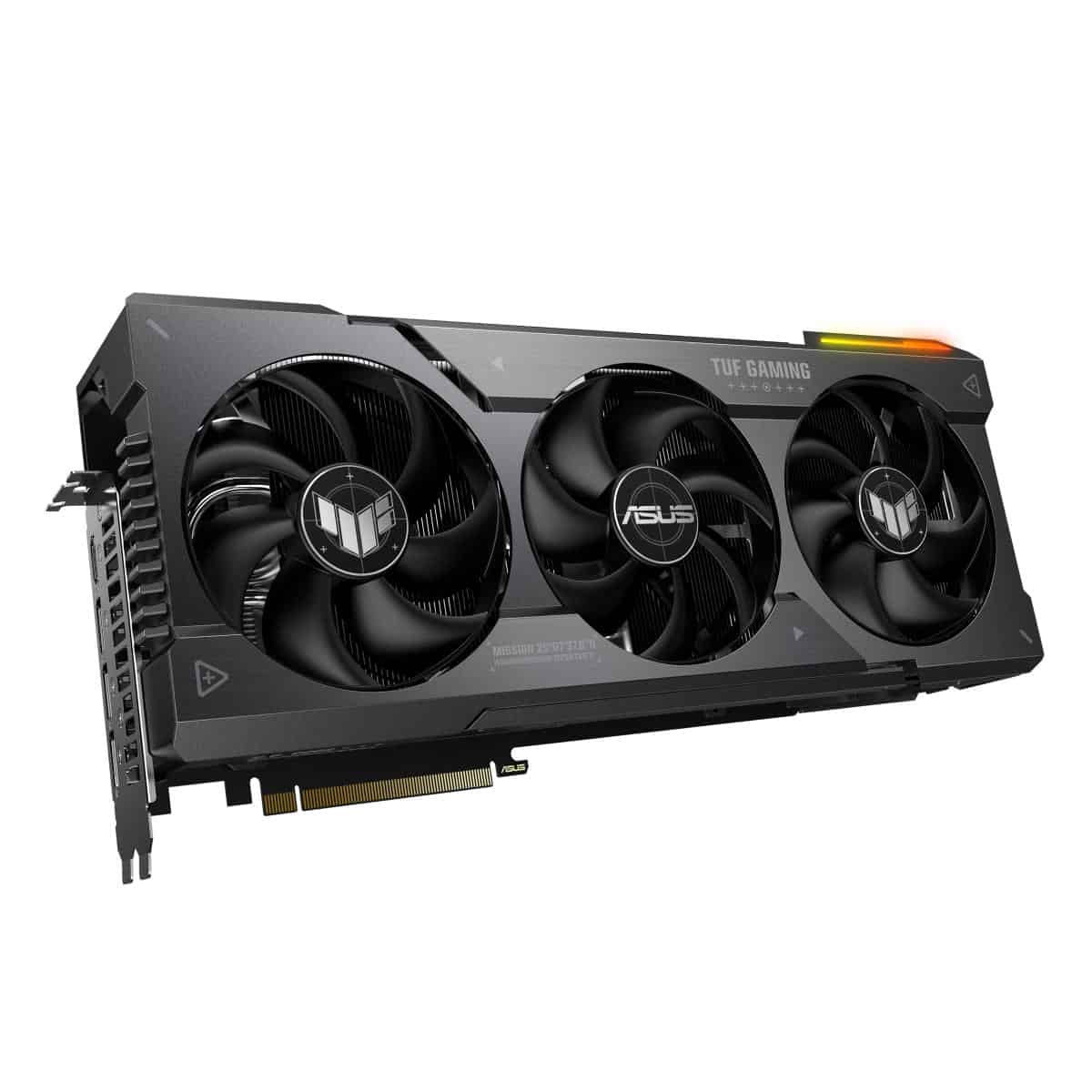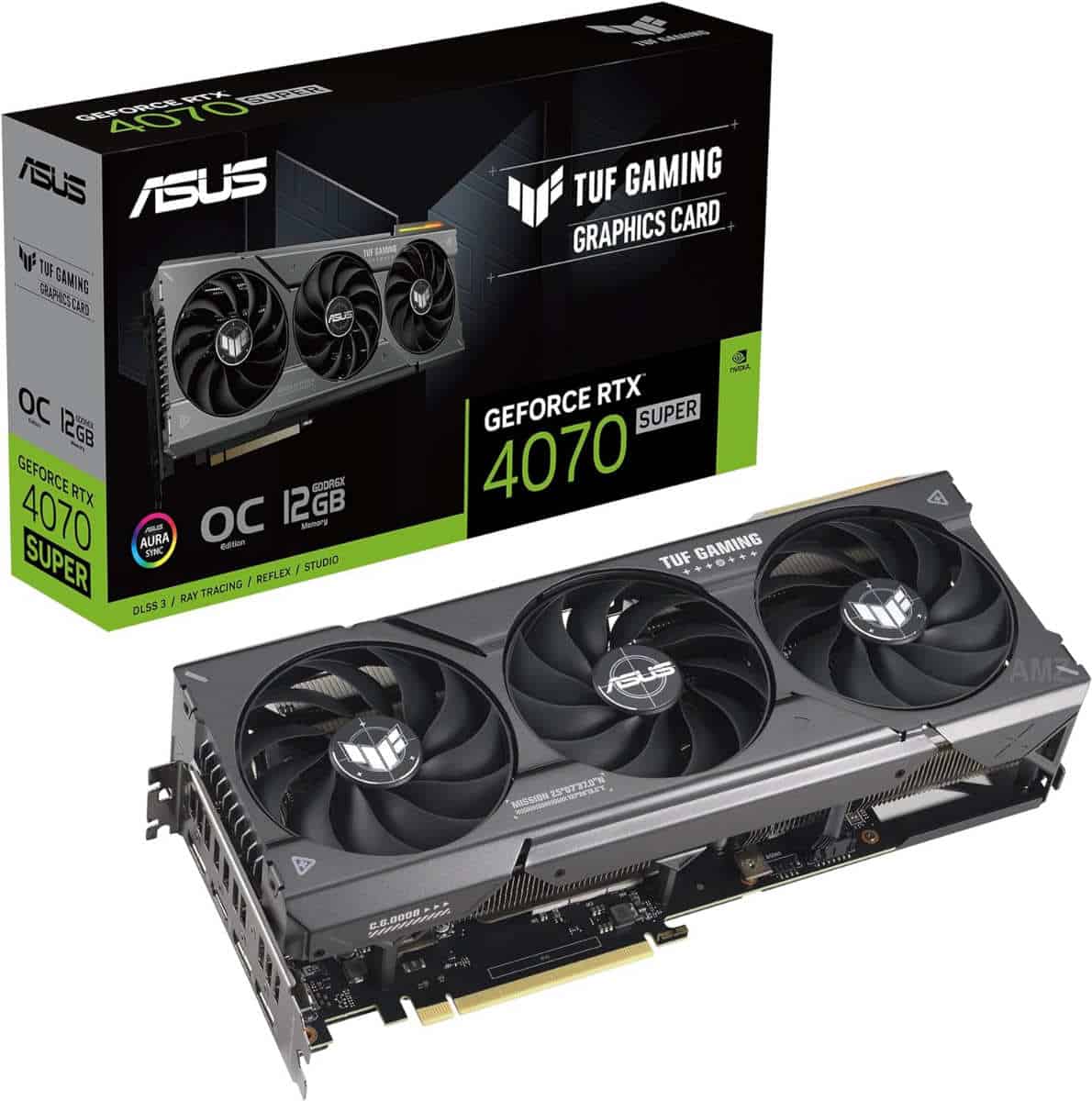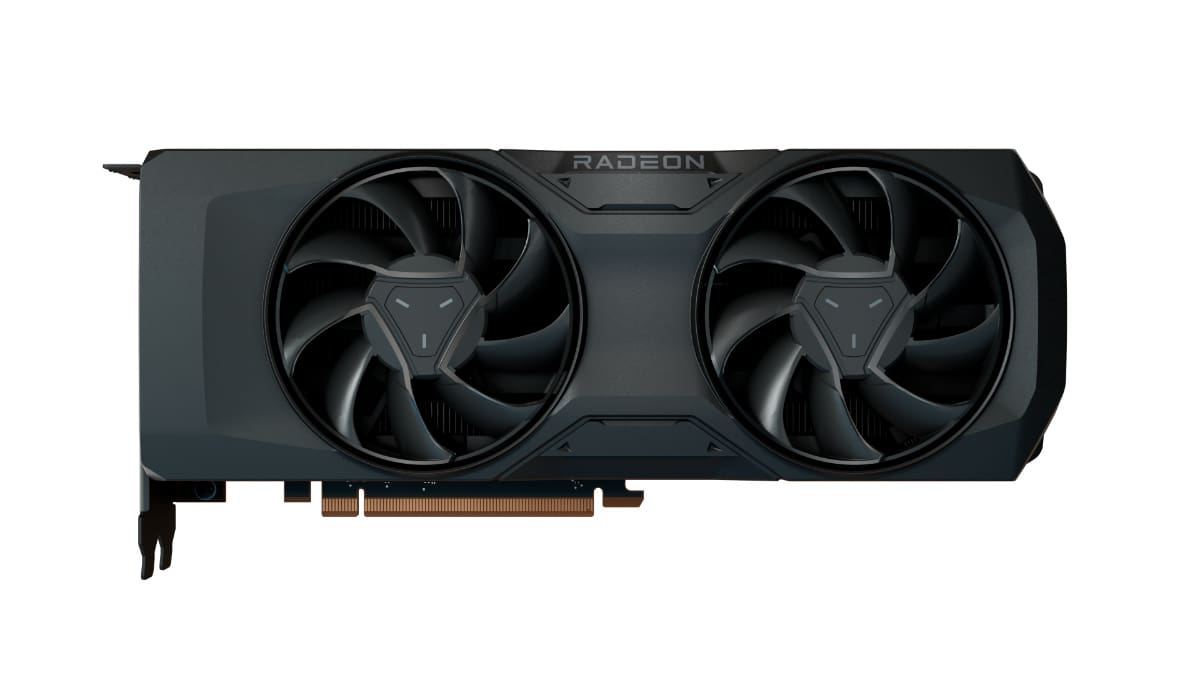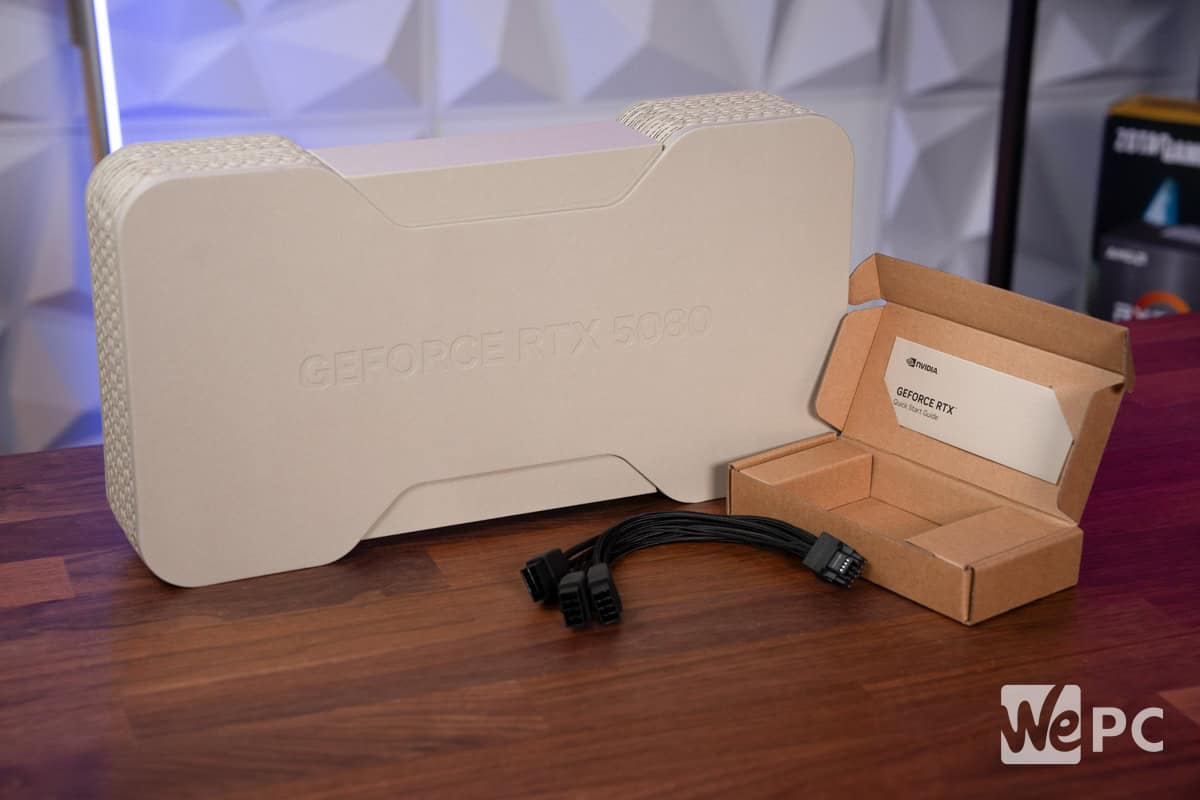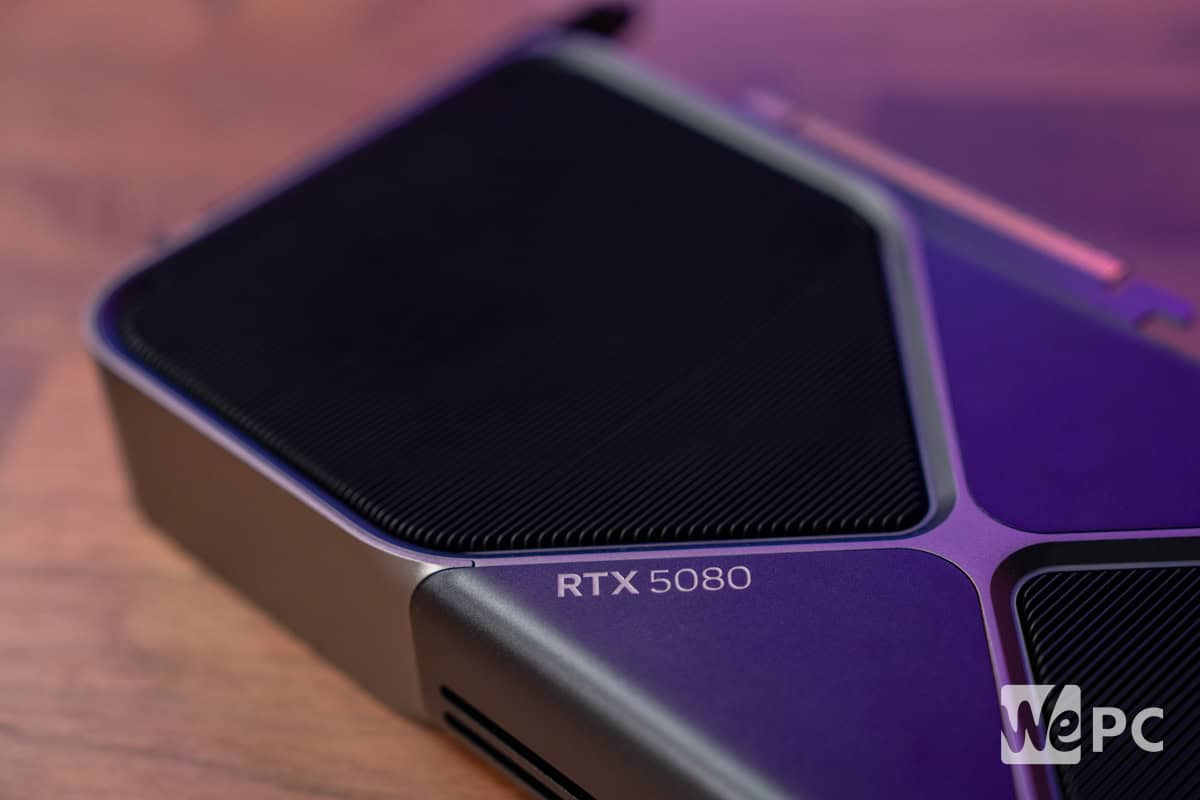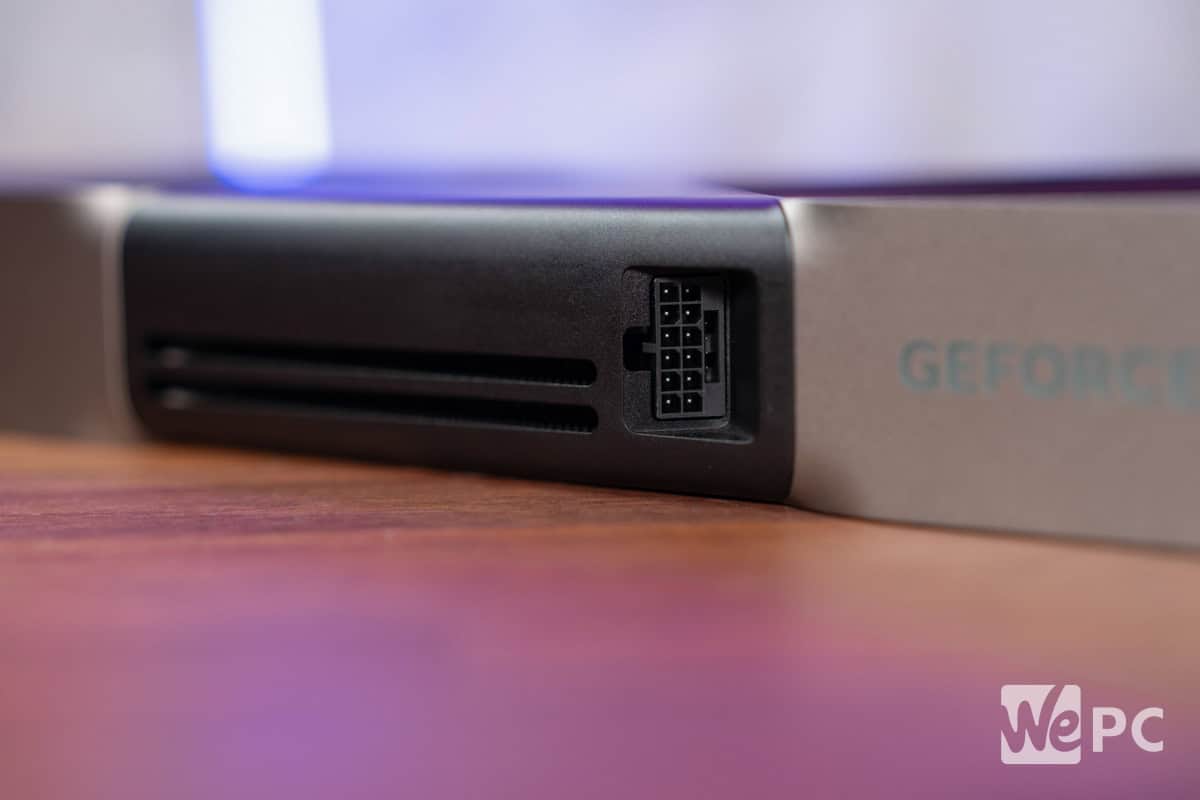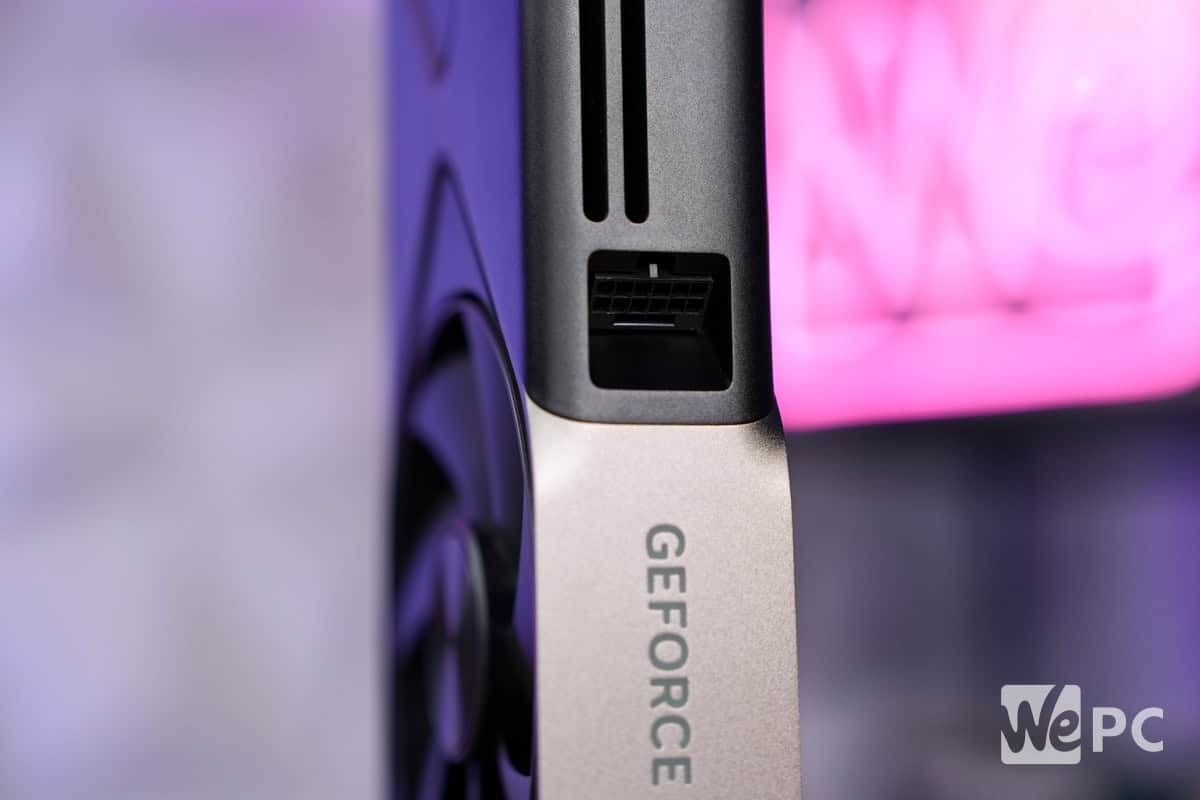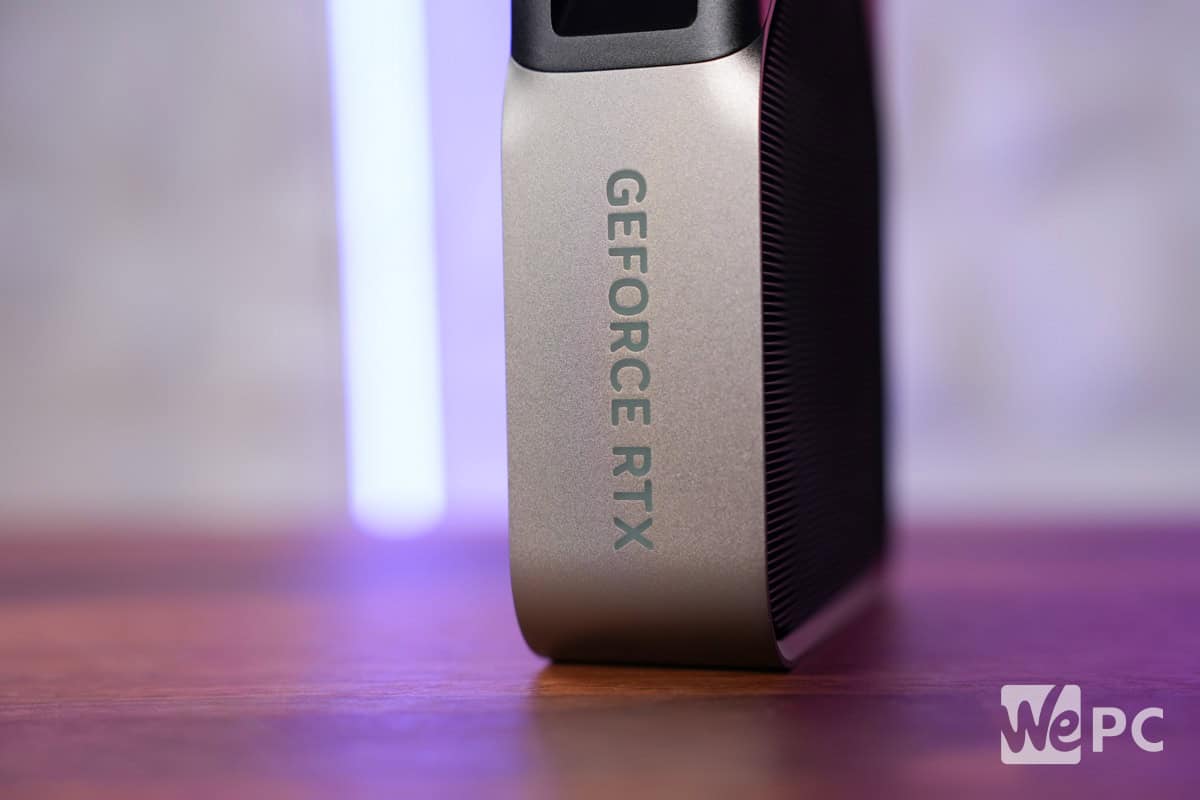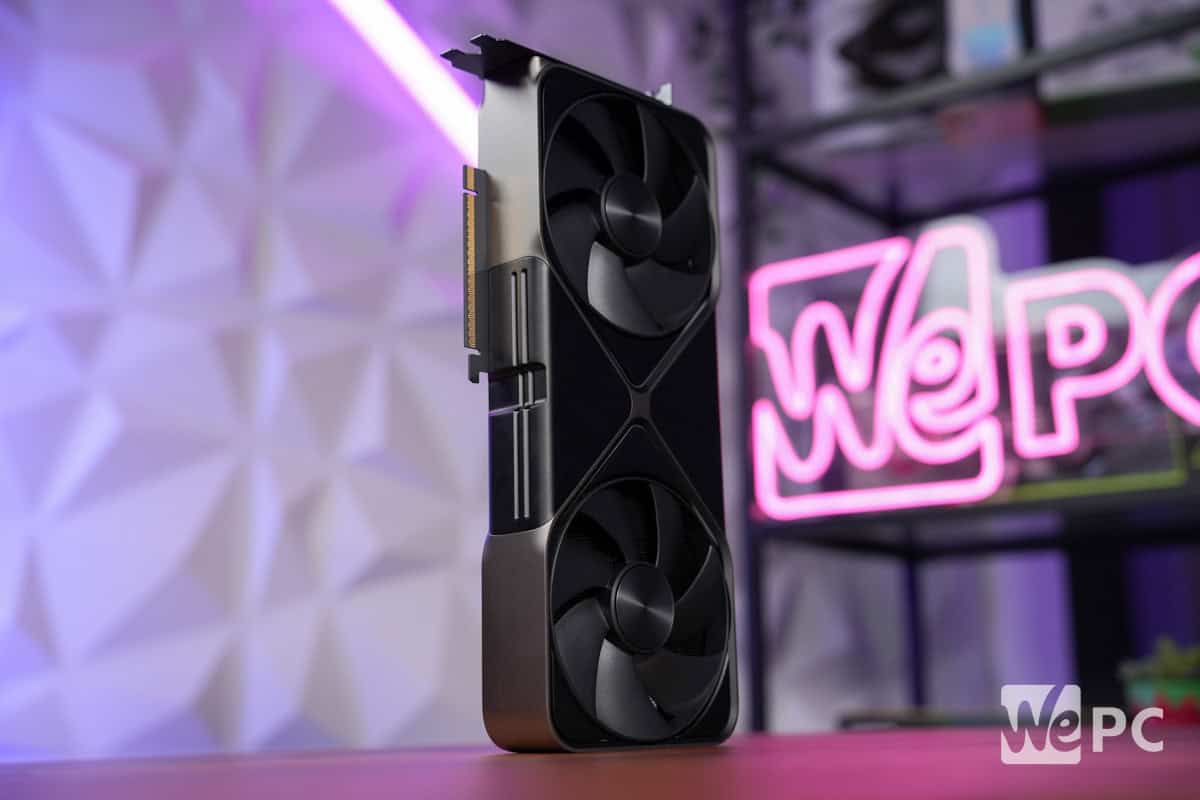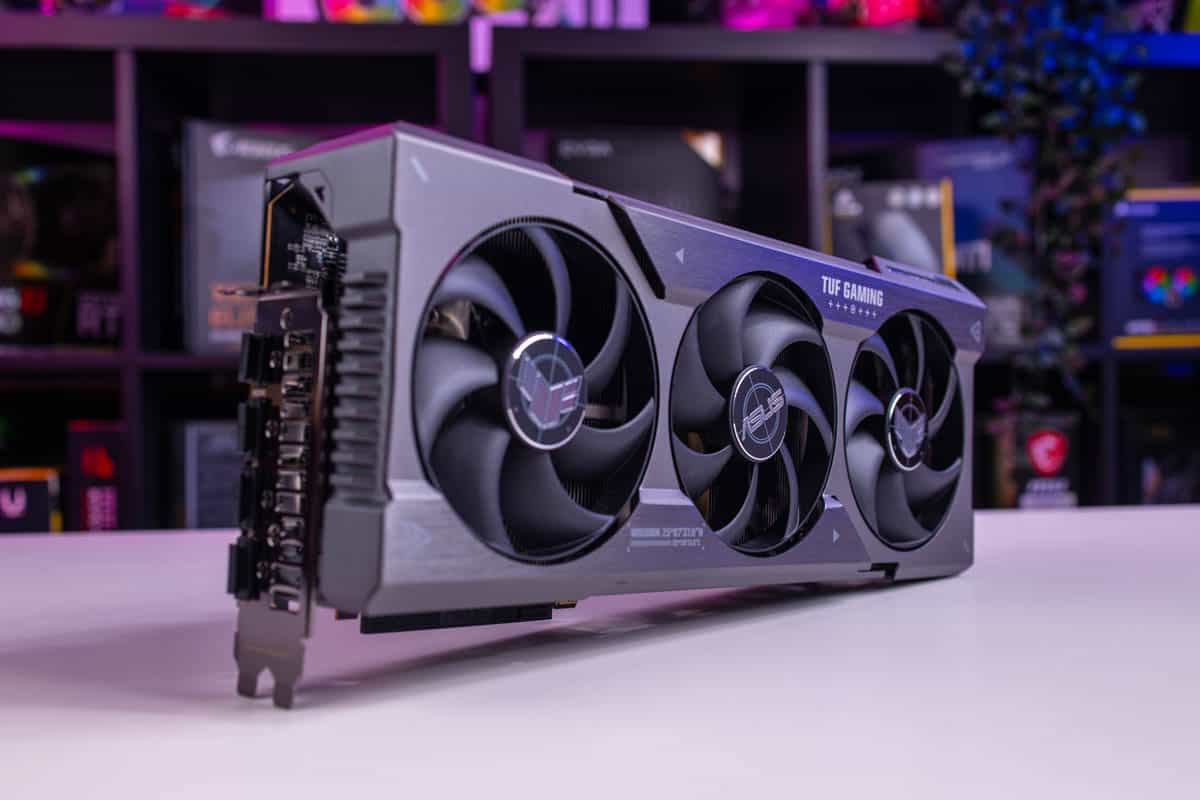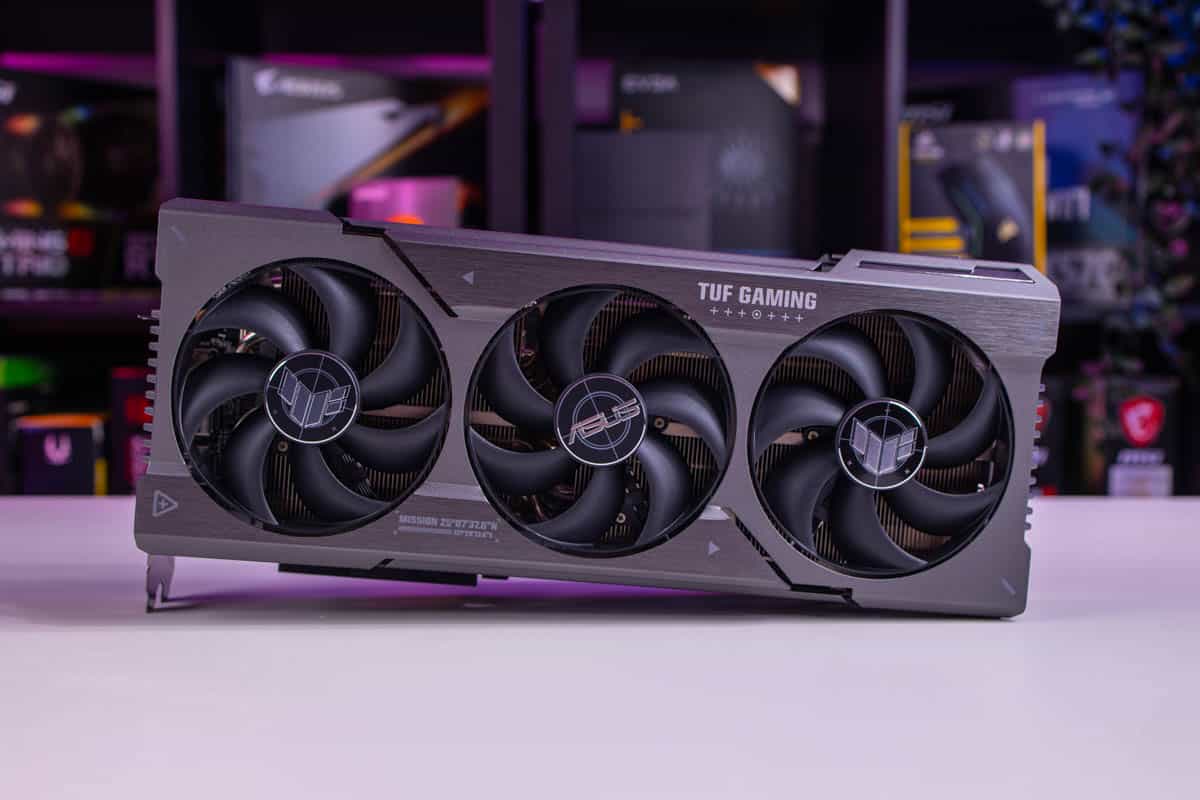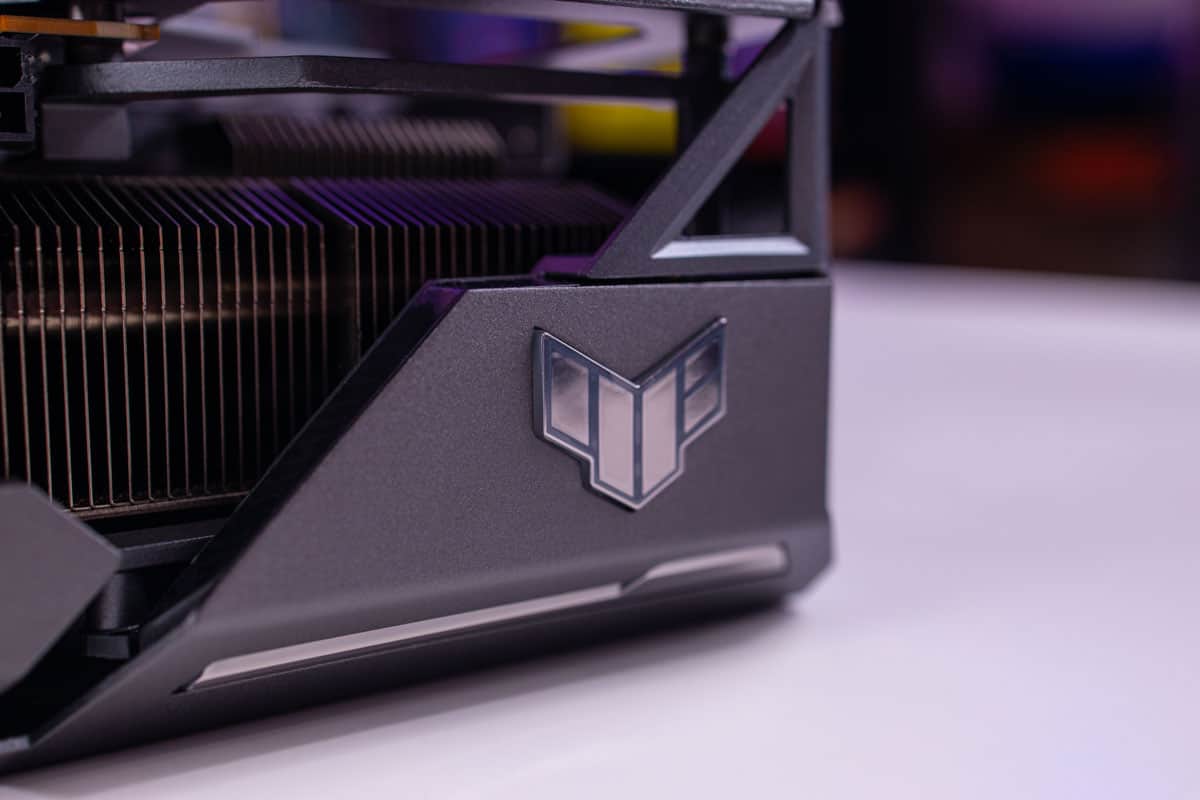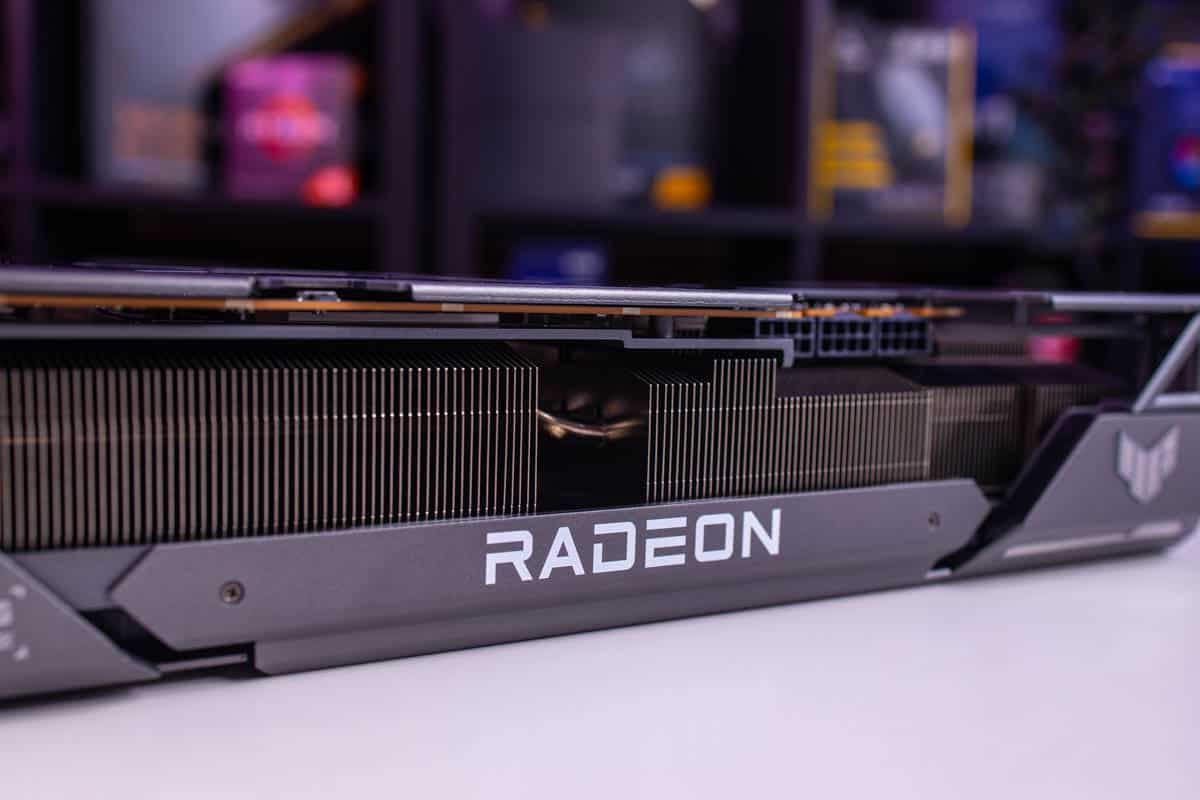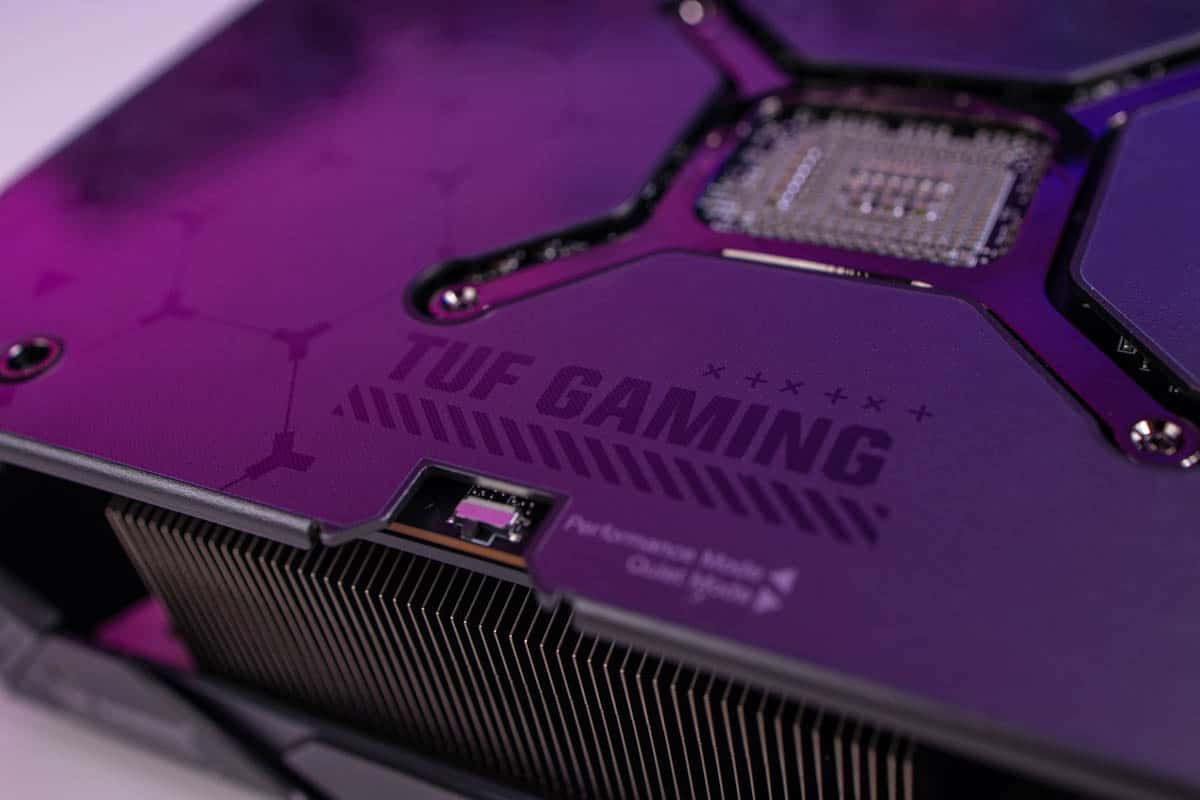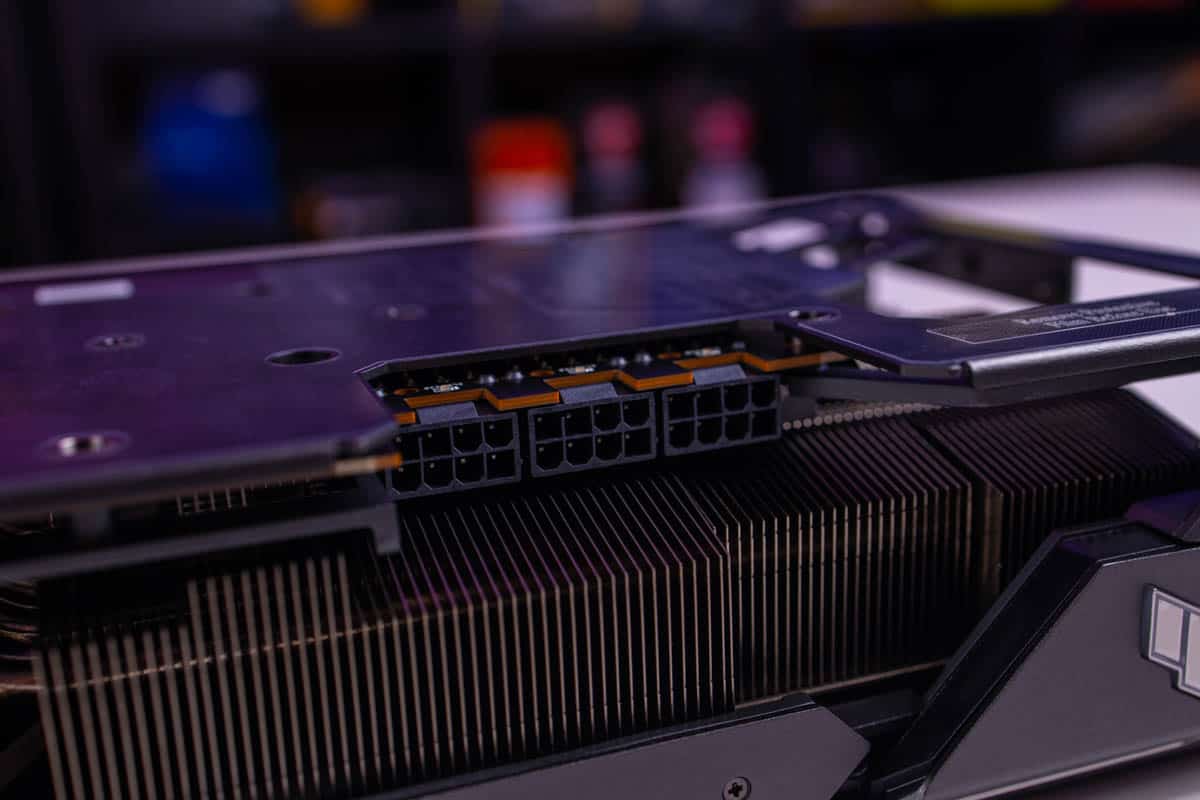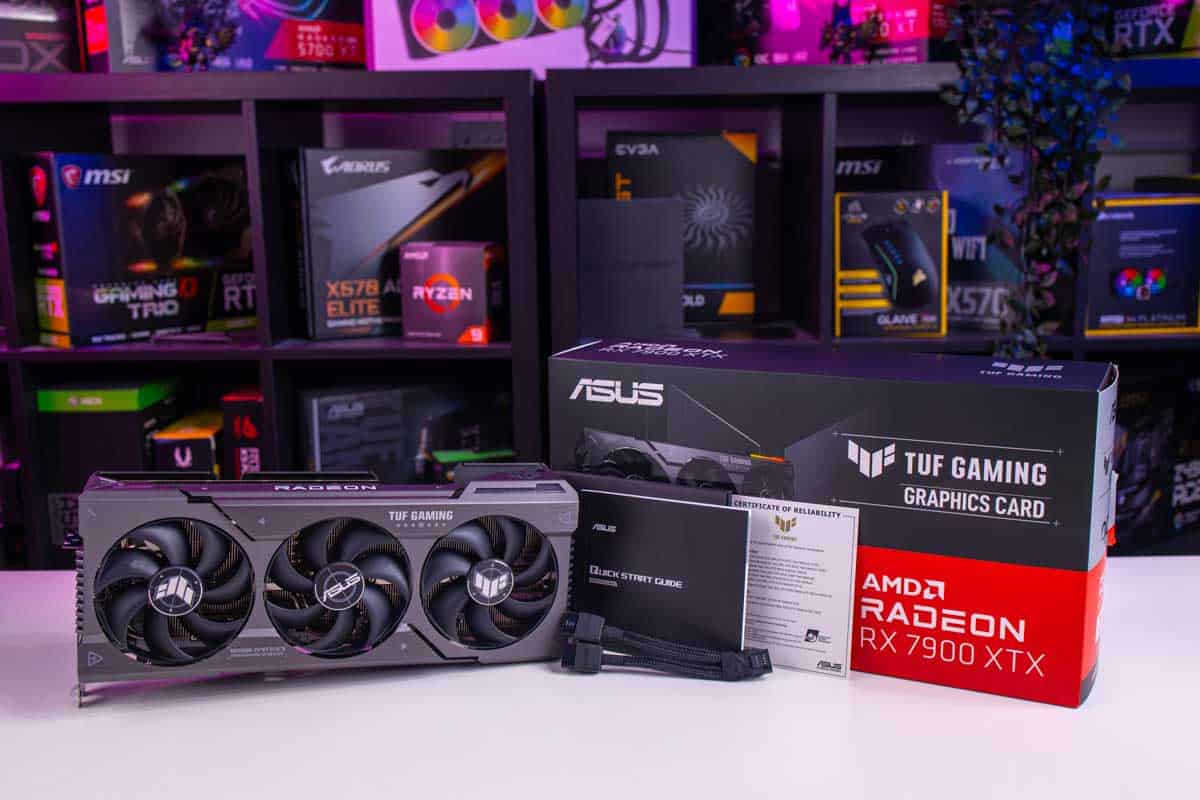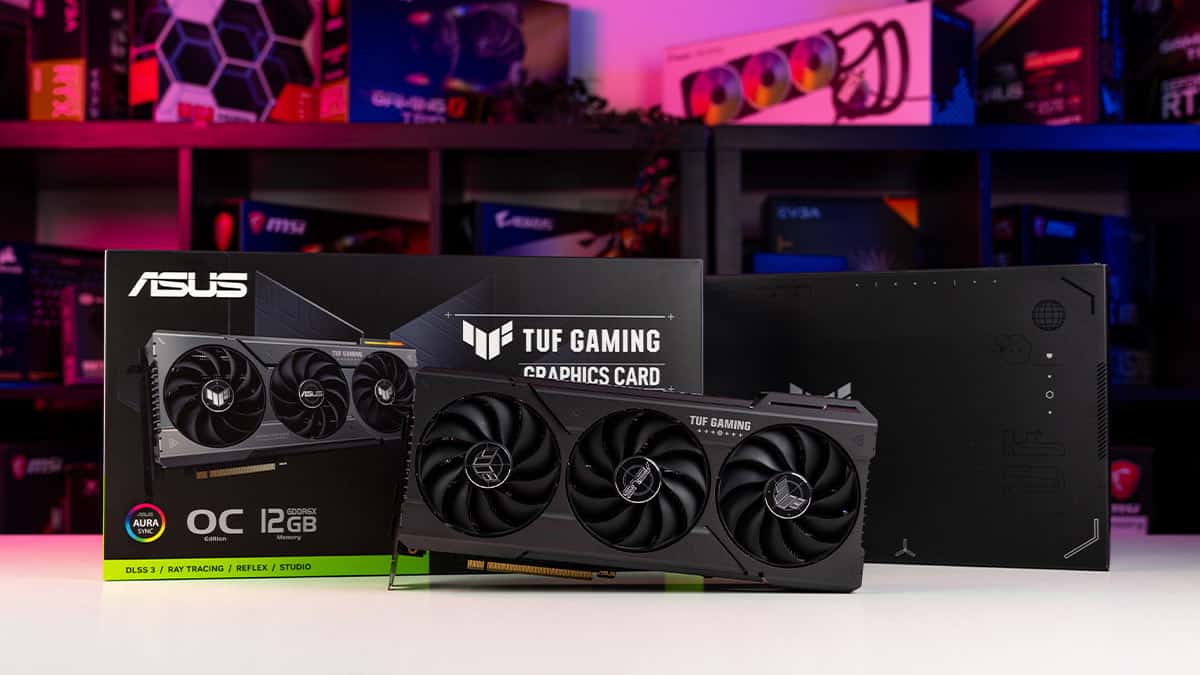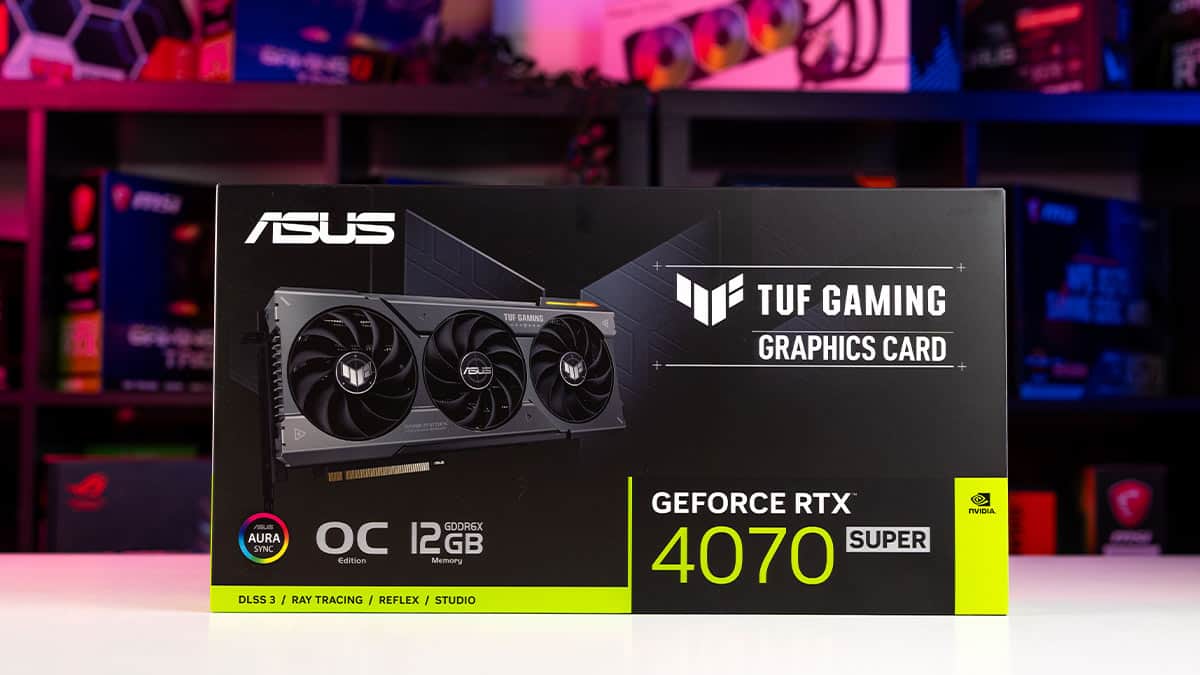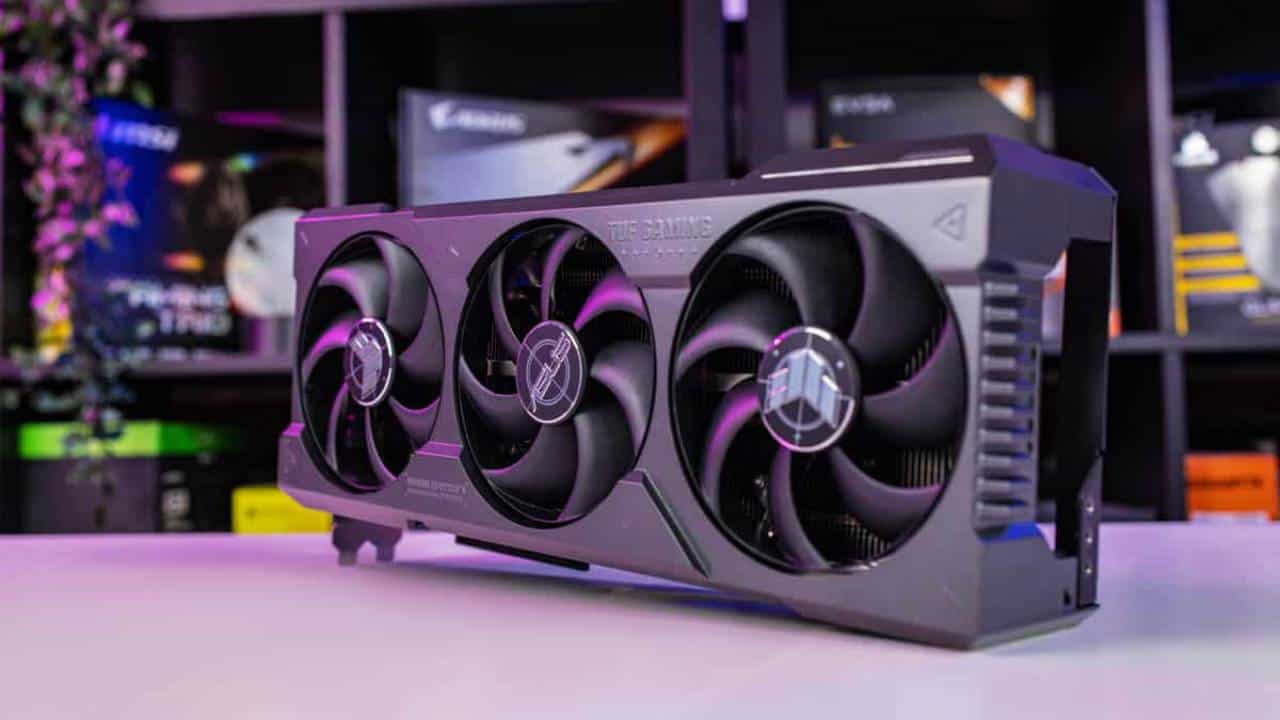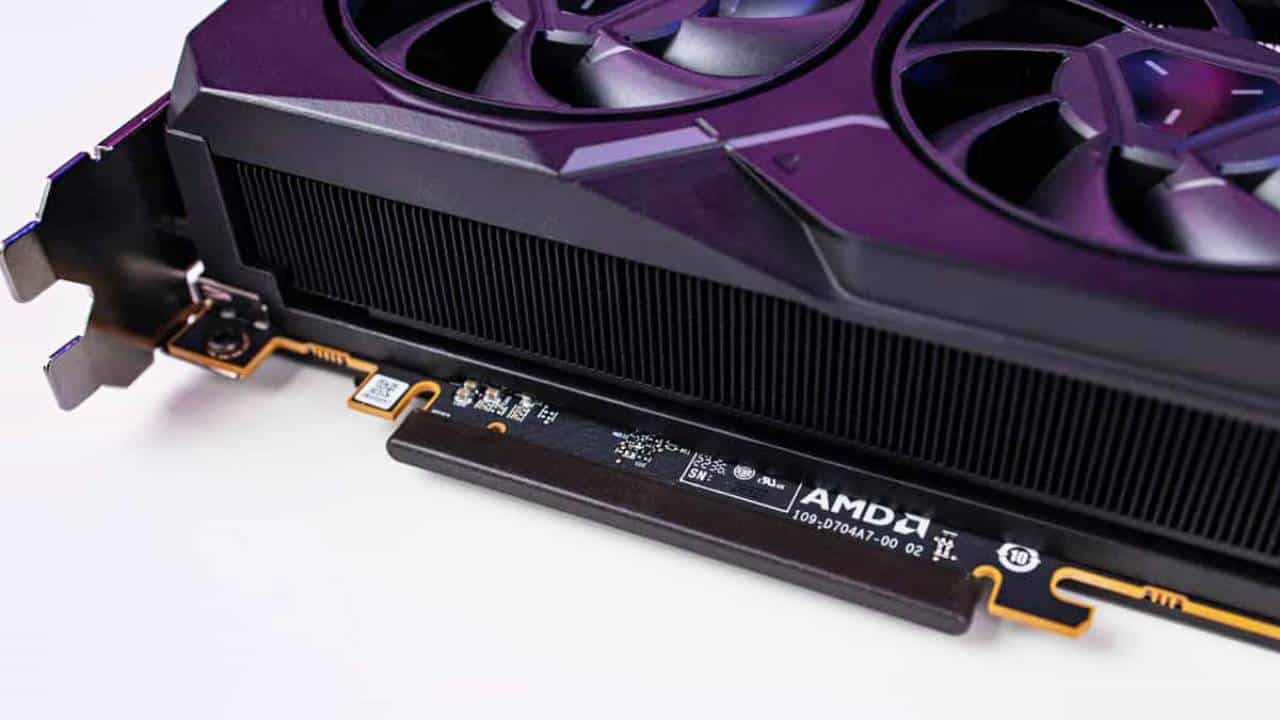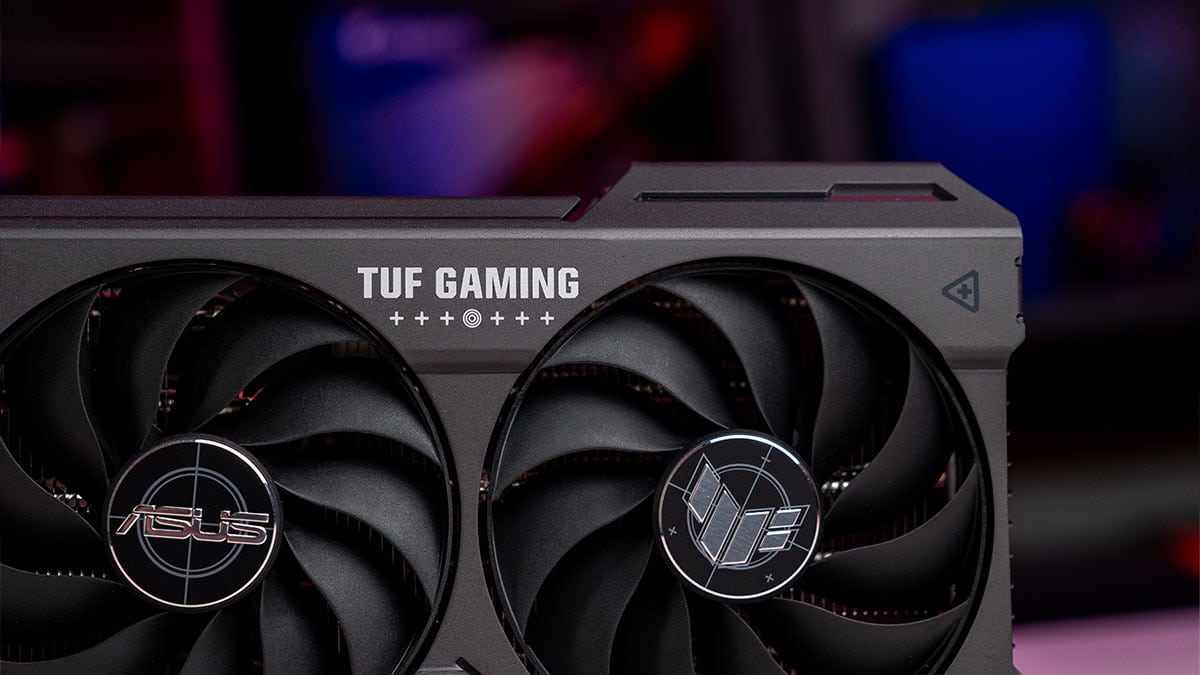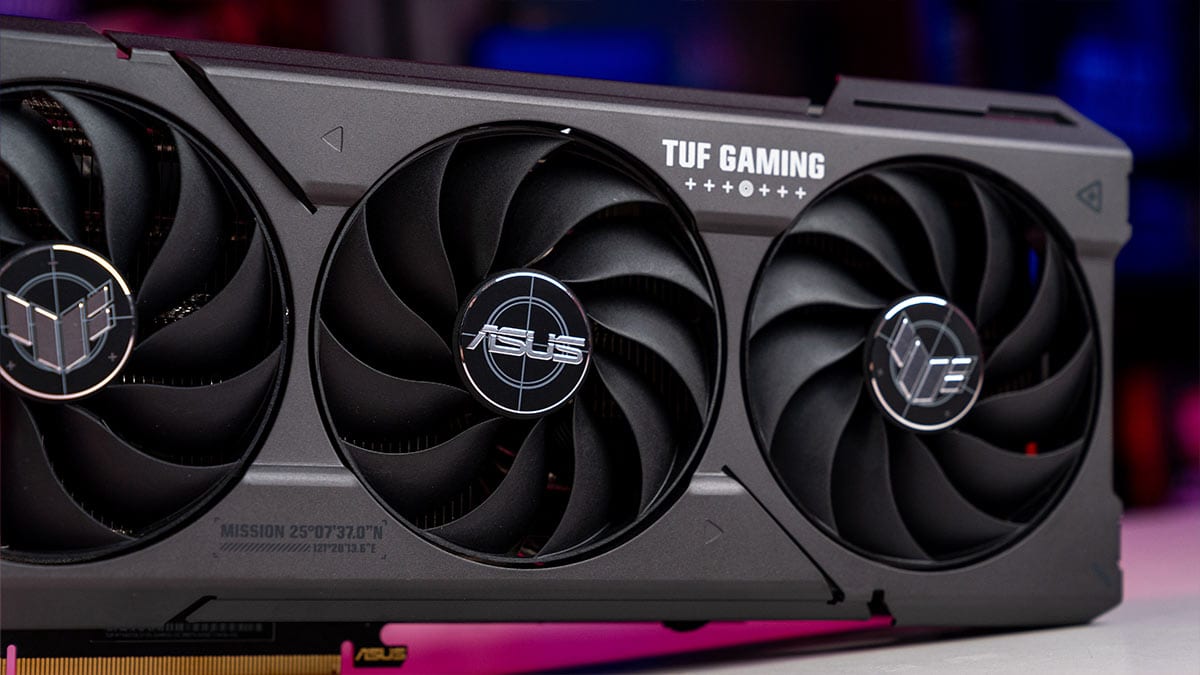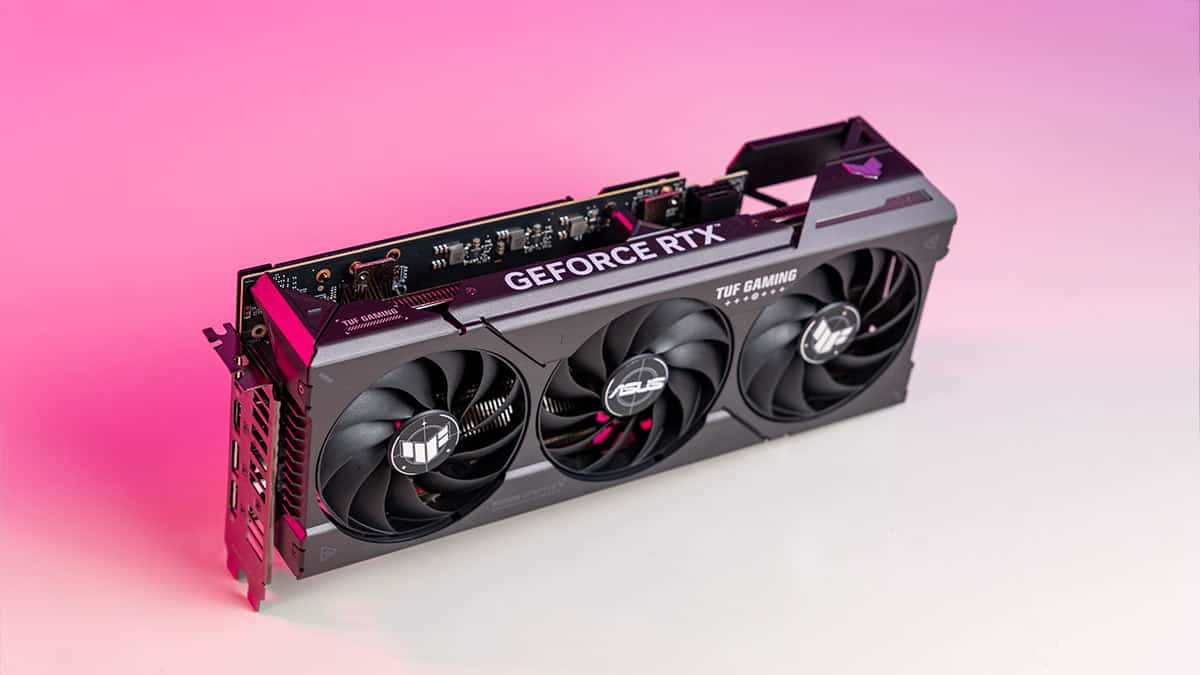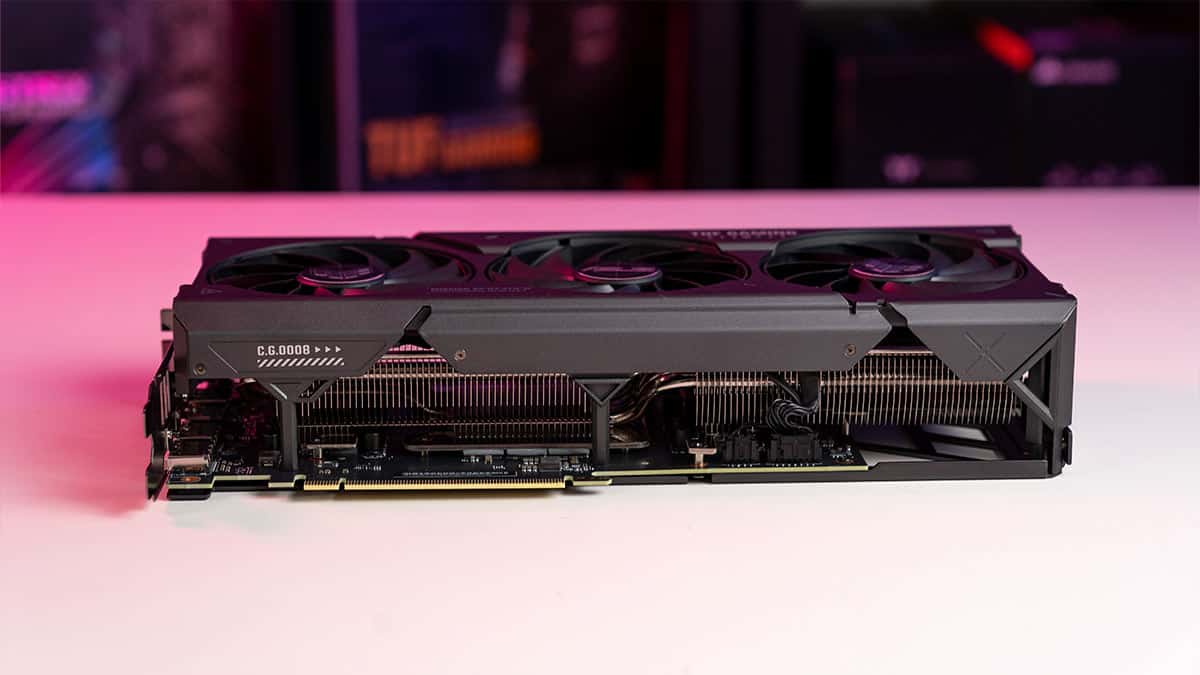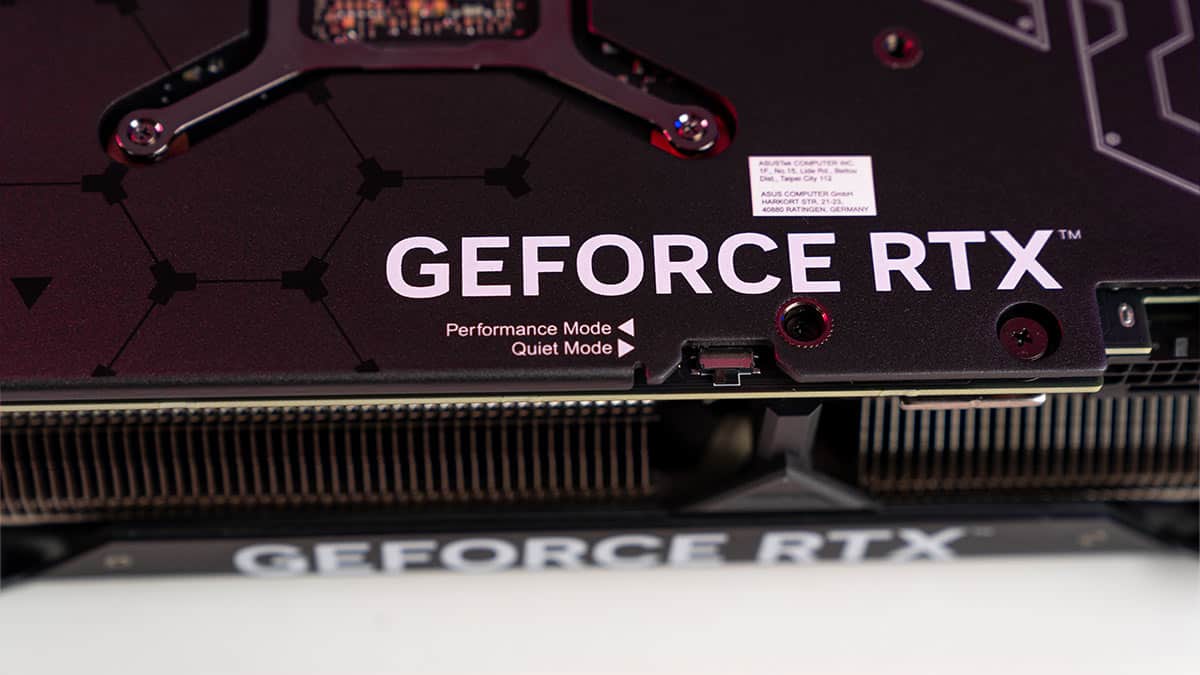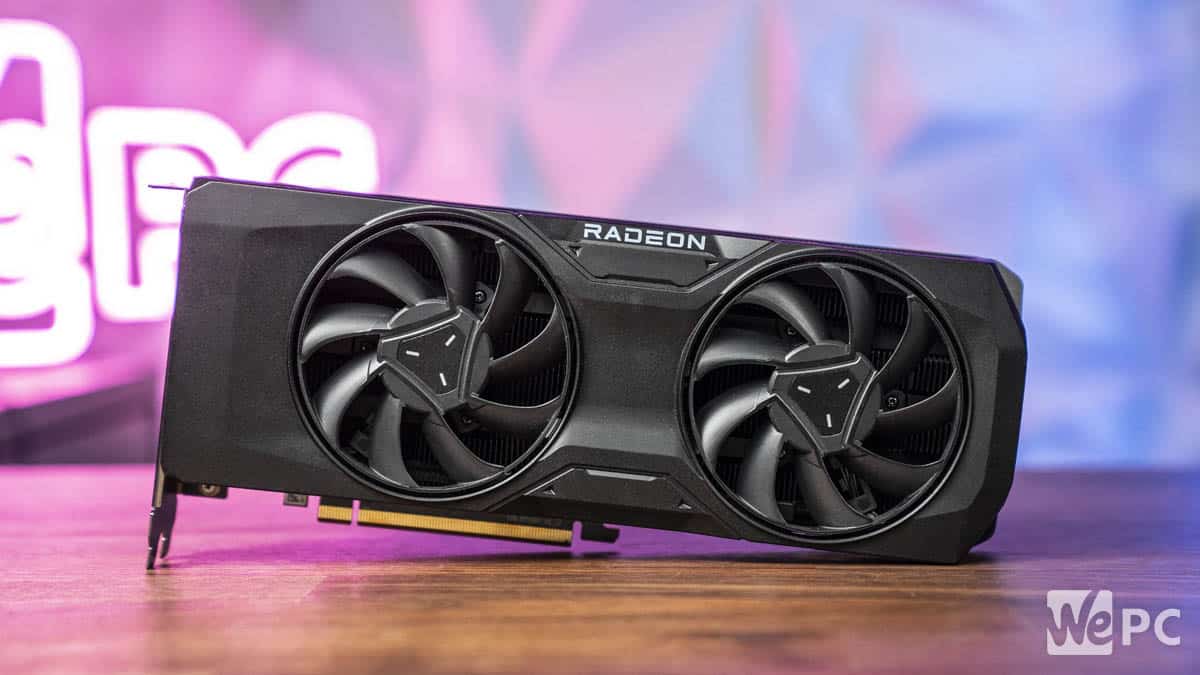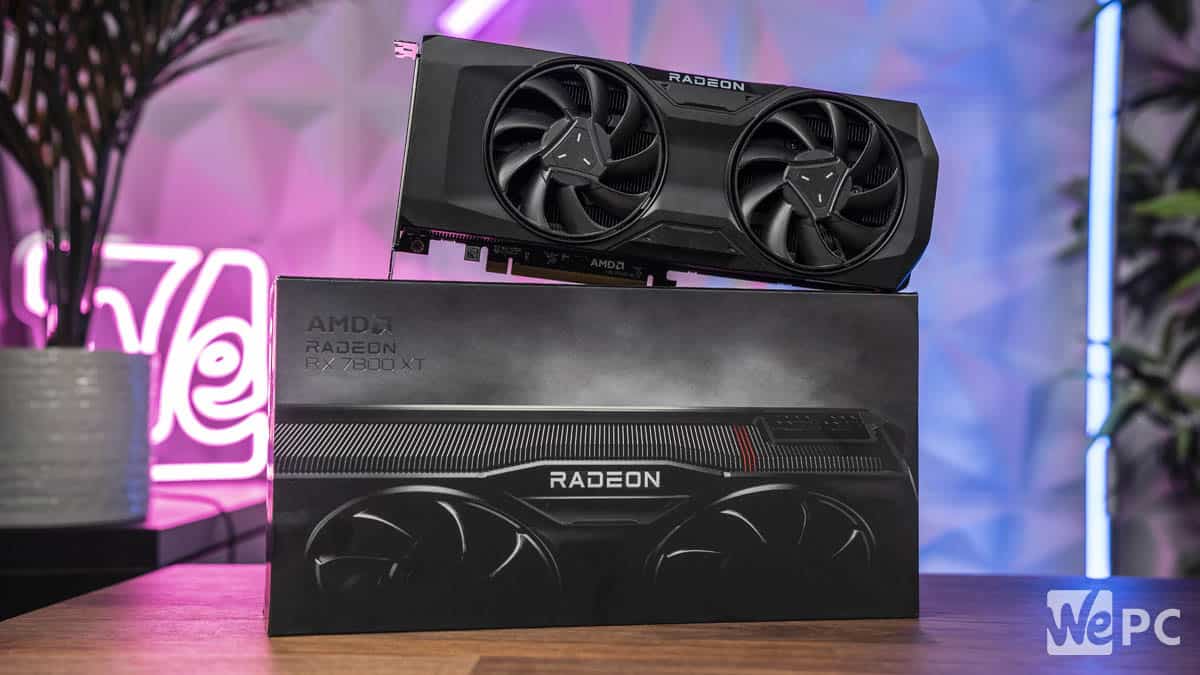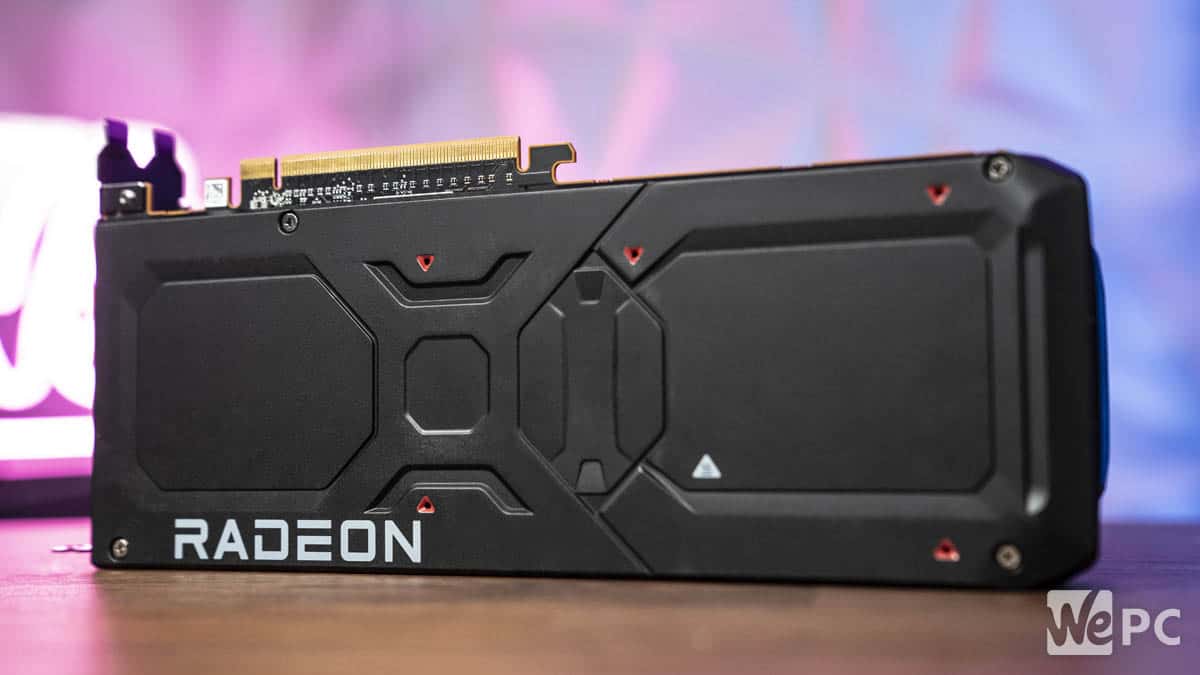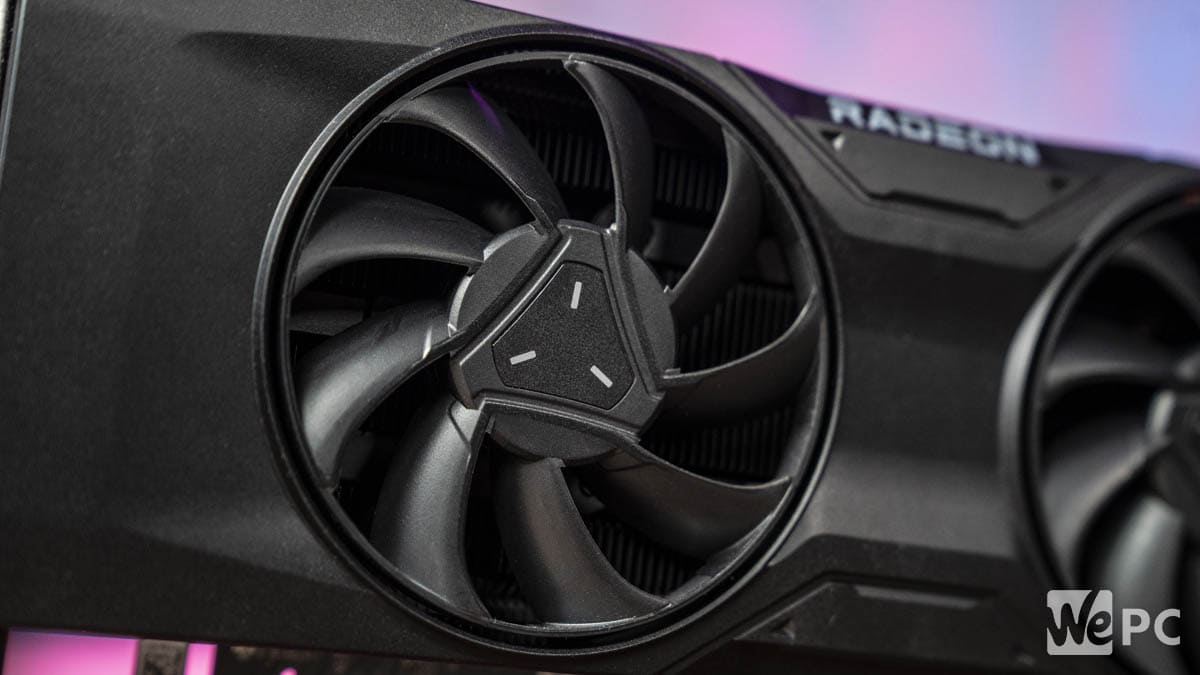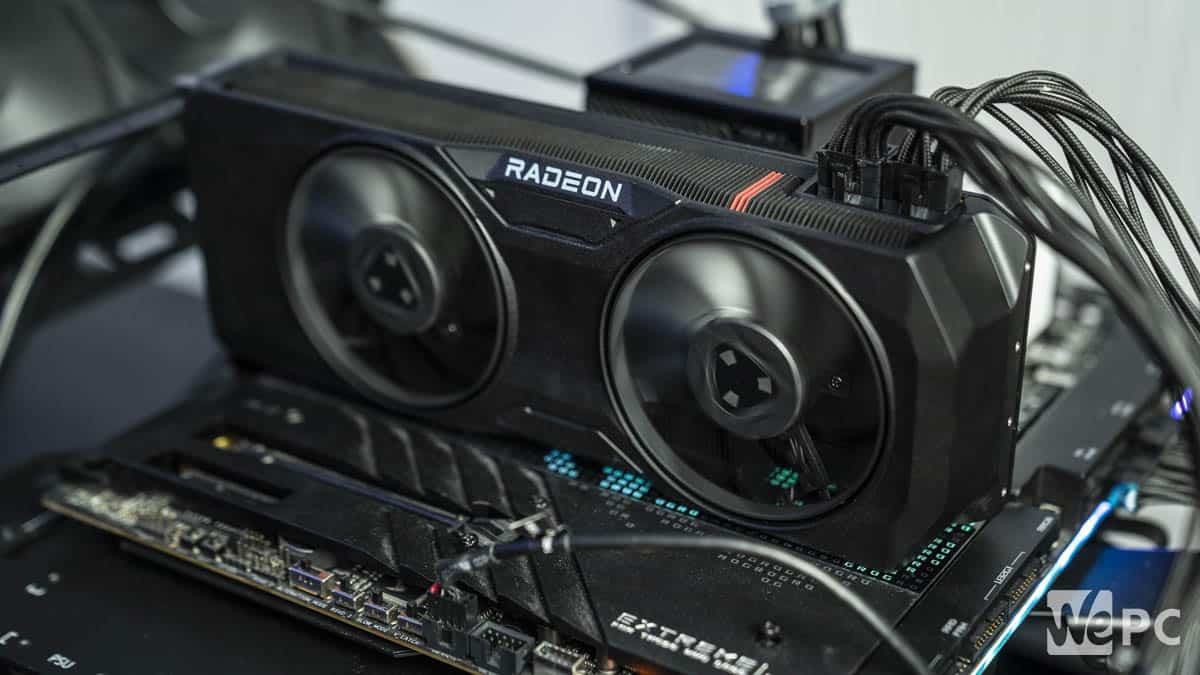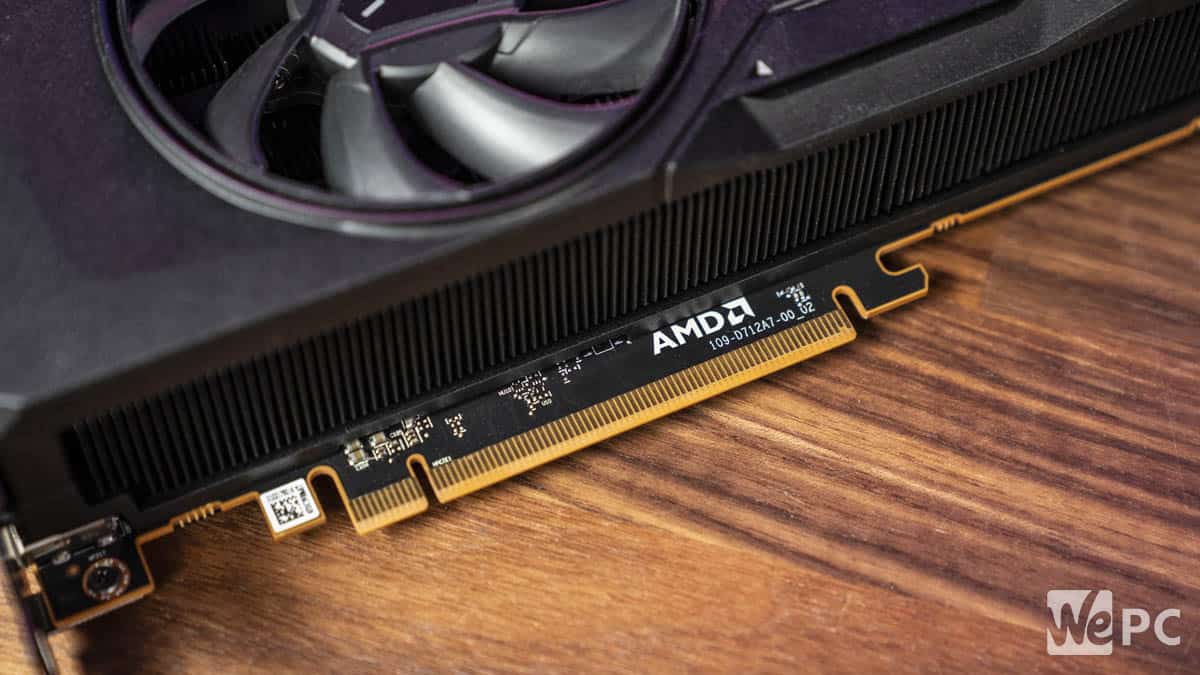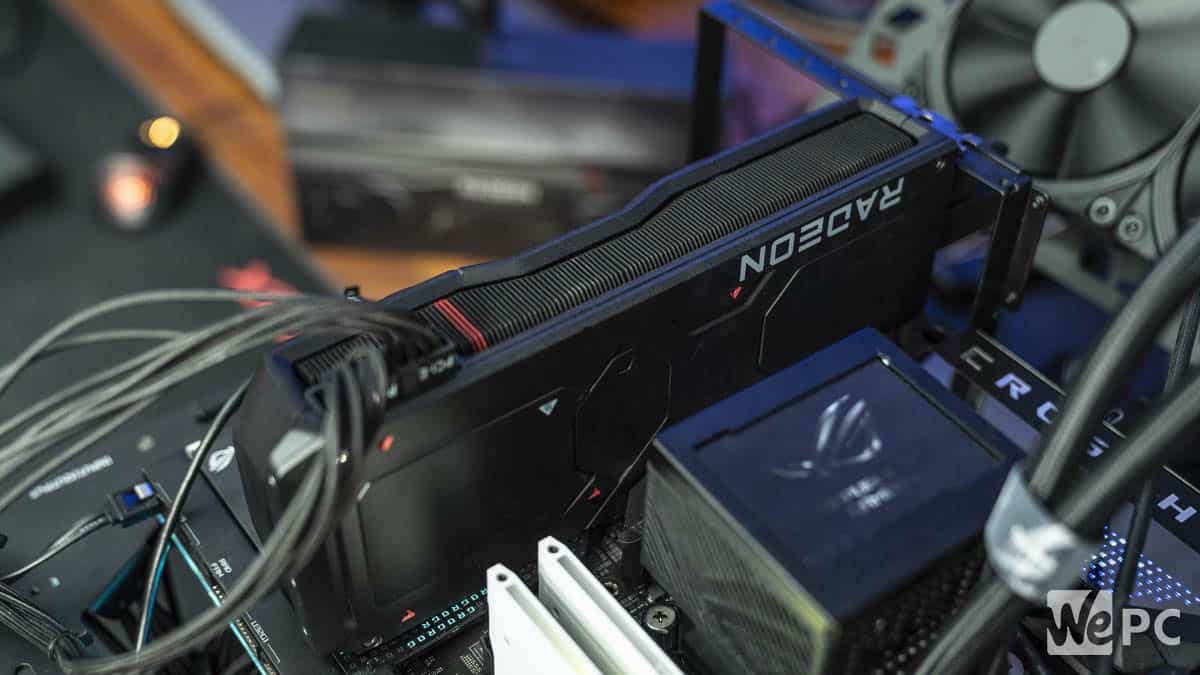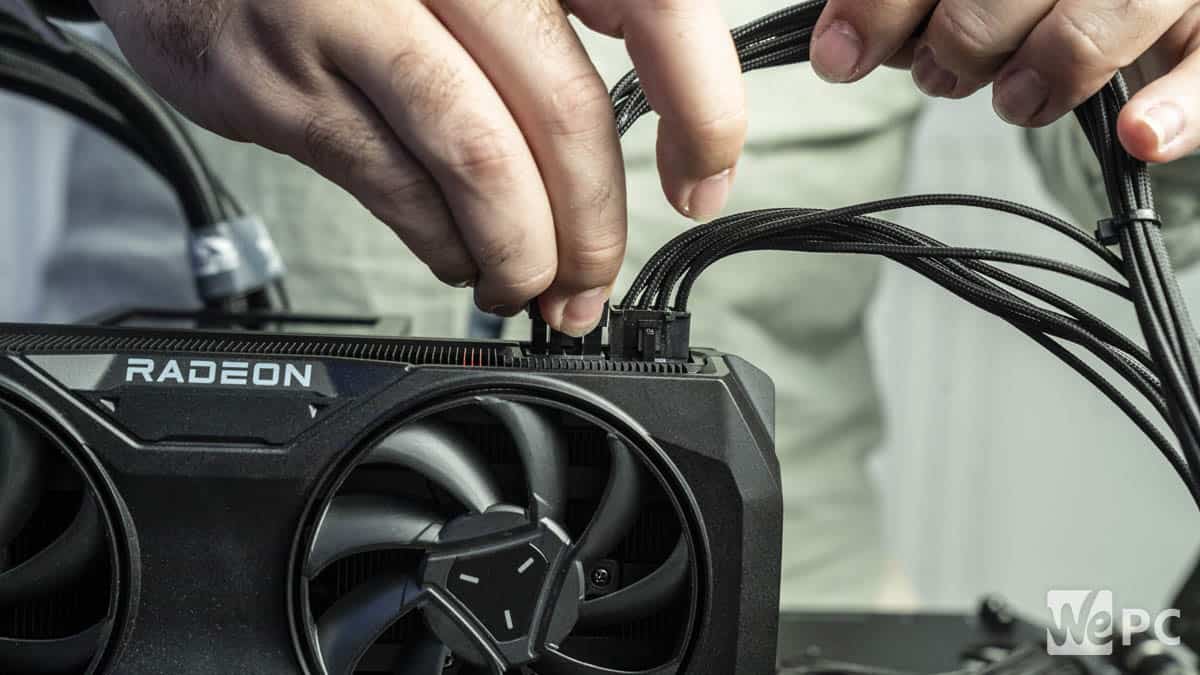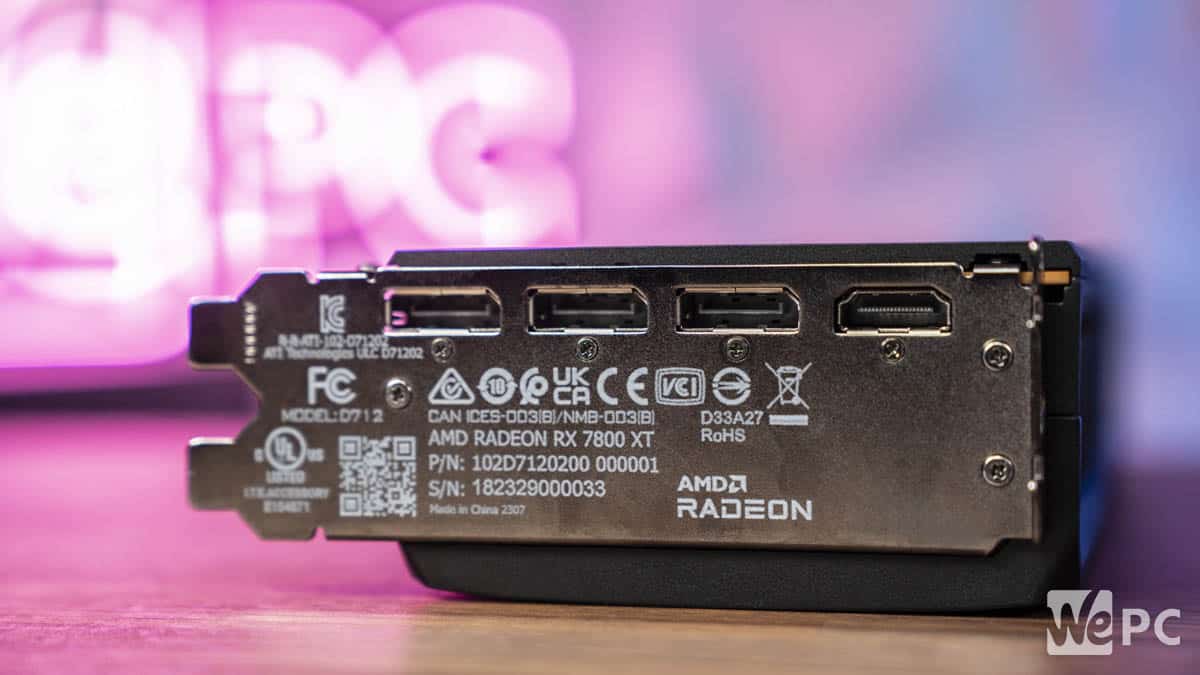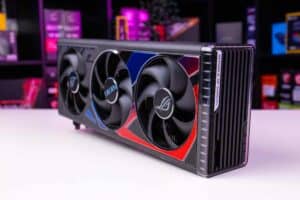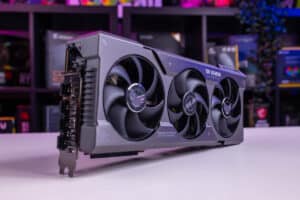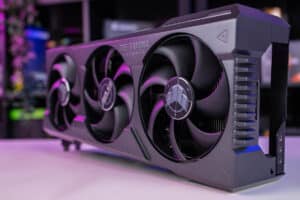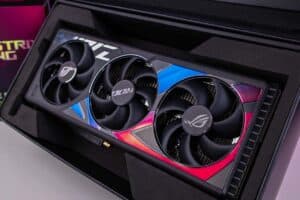Best GPU for Ryzen 9 7900X & 7950X: top picks to avoid bottlenecks
Powerful AMD CPUs deserve powerful processors.
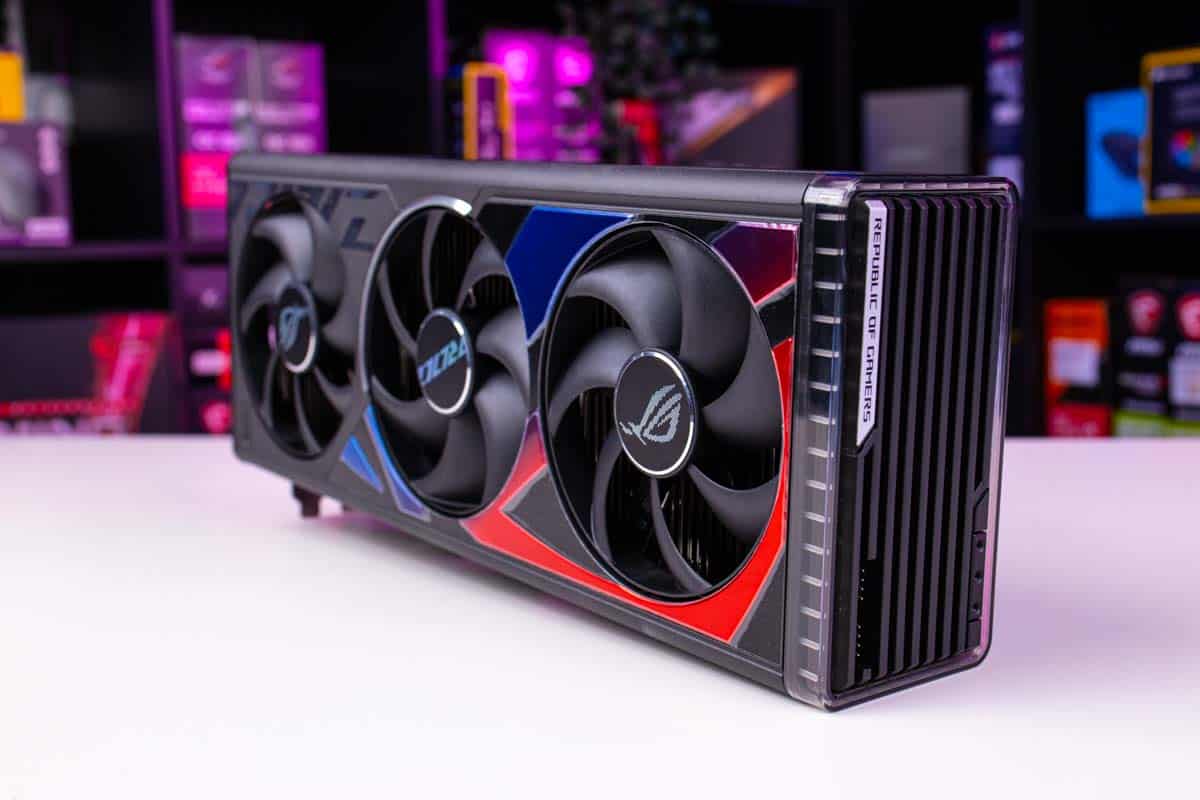
WePC is reader-supported. When you buy through links on our site, we may earn an affiliate commission. Prices subject to change. Learn more
Choosing the best GPU for any CPU can be hard, it’s made even harder by the fact we’re opting for two of the best and most powerful CPUs that the 7000 series has to offer. You might think it’s as simple as selecting the best GPU you can find, but that can be a recipe for wasting a lot of money. Now the top CPUs need a powerful GPU to pair with them So what is the best GPU for Ryzen 9 7900X & 7950X?
The Ryzen 7000 series CPUs utilize TSMCs 5nm process. Creating a die size of 2x 70mm² in the chiplet design. Which itself holds 13.4 billion transistors throughout the die. They differ in price and specs. The 7950X features 16 cores and 32 threads with a TDP of 170W at a price of $699. Whilst the 7900X has 12 cores and 24 threads with a TDP of 170W and an MSRP of $549. though you can find them for much less now thanks to the release of the 9000 series.
Products at a glance
-
best GPU for 7900X & 7950X
RTX 5080 Founders Edition
- Core clock speed: 2.30 GHz (Base) 2.62 GHz (Boost)
- CUDA Core: 10,752
- Memory: 16 GB GDDR7
- Memory speed : 30 Gbps
- Power connector: 12V-2×6
- TBP: 360W
-
Runner Up
ASUS TUF Radeon RX 7900 XTX OC
- Core Clock Speed: 1,895 MHz base, 2,395 MHz shader & game, 2,565 MHz boost
- Stream processors: 6,144
- Memory Size: 24GB GDDR6
- Dimensions: 352.9 x 158.2 x 72.6 mm
- PSU Required: 850W
- TBP: 355W
-
Value Pick
ASUS TUF Gaming GeForce RTX 4070 Super OC
- Core clock speed: 2565 MHz boost, 1980 MHz base
- CUDA count: 7,168
- Memory: 12GB GDDR6X
- Dimensions: 301 x 139 x 63 mm
- PSU required: 750W
- TBP: 220W
-
Budget Pick
AMD Radeon RX 7800 XT
- Core clock speed: 2,430MHz boost, 2,124MHz game
- Stream processors: 3,840
- Memory: 16GB GDDR6
- Dimensions: 267 x 111 x 50mm
- PSU required: 600W
- TBP: 263W
How we test the best GPUs for the 7900X & 7950X
For the Ryzen 9 7900X and 7950X, our focus is on testing GPUs in real-world environments, combining synthetic benchmarks with actual in-game scenarios. This allows us to assess the GPU’s performance across different use cases, whether it’s gaming, creative work, or demanding multitasking. We carefully analyze frame rates, rendering speeds, and overall efficiency to ensure each GPU can complement the power of these Ryzen CPUs without causing any bottlenecks. To learn more about how we test GPUs, you can check out our dedicated page
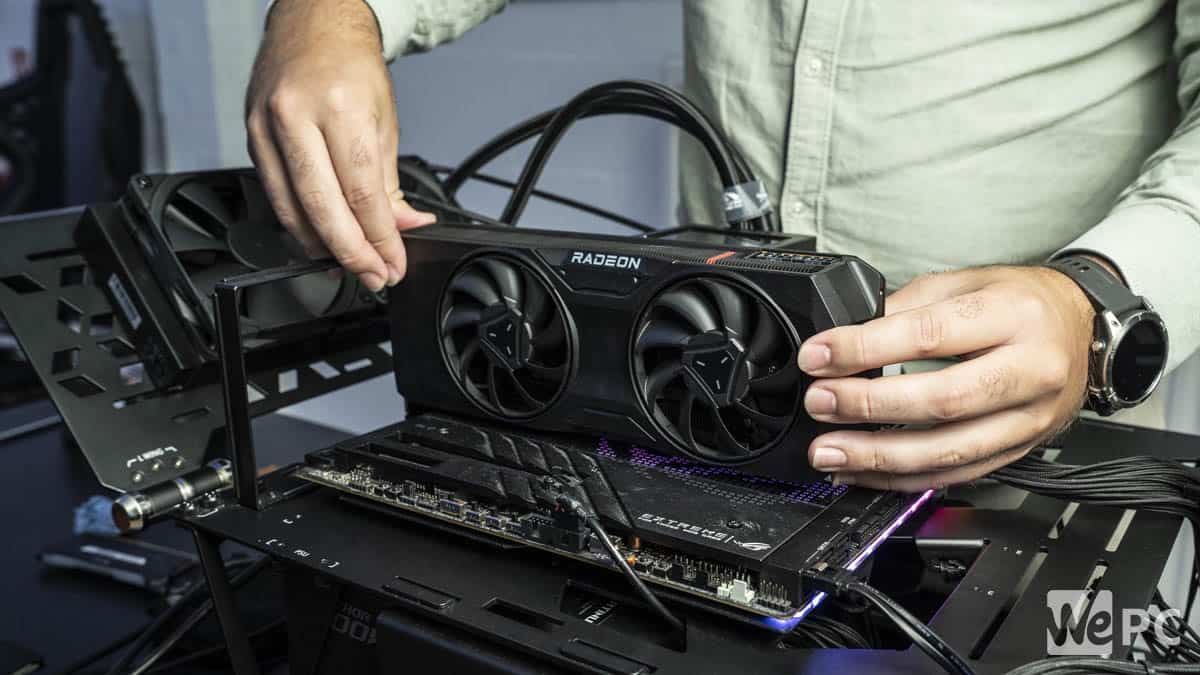
Once we’ve completed our testing, we go beyond just the numbers, considering factors such as power consumption, thermal performance, and build quality. This comprehensive approach helps us recommend the ideal GPU for your 7900X or 7950X system, giving you the confidence to make the best decision for your build.
Best GPU for Ryzen 9 7900X & 7950X

- Core clock speed: 2.30 GHz (Base) 2.62 GHz (Boost)
- CUDA Core: 10,752
- Memory: 16 GB GDDR7
- Memory speed : 30 Gbps
- Power connector: 12V-2×6
- TBP: 360W
The RTX 5080 is arguably the best GPU we’ve seen—second only to the RTX 5090. Harnessing AI-powered performance, it delivers exceptionally high frame rates with ease. If you have a high-refresh-rate monitor and want to push serious FPS, this card offers strong value. At $1,000, it’s still a hefty investment, but considering how it outclasses the 4080 while launching at a lower MSRP, we’d say it’s worth it.
- Incredible performance in DLSS 4-enabled games
- MFG facilitates unheard-of performance
- 2 slot card makes a nice change from 4
- Relatively cool thanks to re-designed cooling mechanisms
- looks sleek and stylish
- Rasterization performance uplift pales in comparison to DLSS and MFG performance.
- Strong focus on AI means you get less value if you only play games that cannot utilize DLSS.
- Still expensive
The RTX 5080 is a powerhouse GPU that pairs exceptionally well with the Ryzen 9 7900X and 7950X, delivering blistering performance across high-refresh 1440p and true 4K gaming. Built on Nvidia’s Blackwell architecture, the RTX 5080 boasts 10,752 CUDA cores, 16GB of GDDR7 memory, and a staggering 960 GB/s memory bandwidth. These upgrades over the previous generation translate to significantly higher frame rates, improved ray tracing capabilities, and greater efficiency, making it an ideal choice for high-end gaming rigs and workstation users who demand top-tier performance.
With the 7900X or 7950X, the RTX 5080 fully takes advantage of its AI-driven features like DLSS 4, ensuring smooth frame rates even in CPU-intensive scenarios. Benchmarks reveal the RTX 5080 pushing over 150 FPS at max settings in 1440p gaming, while 4K performance remains consistently strong thanks to Nvidia’s improved frame generation and upscaling technologies. The high core counts and clock speeds of the Ryzen 9 CPUs eliminate bottlenecks, allowing the 5080 to stretch its legs fully—whether in competitive esports titles or visually demanding single-player experiences.
In our testing, Counter-Strike 2 sees a major uplift, with the RTX 5080 averaging 343 FPS at 1440p (well above the RTX 4080’s 303 FPS), while maintaining a smooth 240 FPS in the 5th percentile for ultra-responsive gameplay. At 4K, the 5080 extends its lead further, averaging 186 FPS and delivering impeccable performance in high-refresh scenarios. Cyberpunk 2077 further showcases the card’s raw power, where at 1440p, the 5080 hits 151 FPS, significantly ahead of the 4080’s 126 FPS. Even at 4K, it sustains a 72 FPS average—a 26% improvement—making native 4K gaming far more viable without relying heavily on upscaling.
Titles leveraging Nvidia’s latest AI-driven enhancements further solidify the 5080’s dominance. Horizon Zero Dawn Remastered, using DLSS Performance mode, maintains 149 FPS at 4K but jumps to 190 FPS with Frame Generation enabled, highlighting the benefits of Nvidia’s cutting-edge rendering technology. Shadow of the Tomb Raider runs at 138 FPS natively at 4K, and with ray tracing enabled, the 5080 still holds an impressive 91 FPS compared to the 4080’s 83 FPS. Star Wars Outlaws demonstrates the power of multi-frame generation, where MFG 4x at 4K boosts the 5080 to 169 FPS—leaving the 4080’s 117 FPS in the dust.
Beyond gaming, the RTX 5080 proves its mettle in compute-heavy workloads, making it a compelling option for creators and professionals. Fire Strike Ultra shows a 34% uplift, and Time Spy Extreme posts a 24% improvement over the 4080. In ray tracing-heavy tests like Port Royal, the 5080 delivers a 31% jump, cementing its position as one of the most efficient and capable GPUs available. When paired with the multi-threaded power of the Ryzen 9 7900X or 7950X, this GPU ensures a level of performance and future-proofing that makes it the go-to choice for high-end PC builds.

- Core Clock Speed: 1,895 MHz base, 2,395 MHz shader & game, 2,565 MHz boost
- Stream processors: 6,144
- Memory Size: 24GB GDDR6
- Dimensions: 352.9 x 158.2 x 72.6 mm
- PSU Required: 850W
- TBP: 355W
- Memory Clock: 20 Gbps
- Memory Bus: 384-bit
- Card Bus: PCIe 4.0 x16
- Output: 1x HDMI 2.1, 3x DP 2.1
- Power Connectors: 3 x 8-pin
The 7900 XTX is the best that AMD currently offers making it a top pick for high-end Ryzen CPUs. 4K is not out of the question with this GPU so consequently 1440p is no issue either, especially on the RDNA 3 architecture.
- OC card but still priced at MSRP for better performance at the same price
- Dual BIOS button and robust design of the card
- Side RGB that has no button but requires software to control
Now, claiming the apex position in AMD’s GPU lineup and the best GPU for the 7900X or 7950X, the RDNA 3 cards boast significant enhancements. With each generation, these cards demonstrate marked performance improvements, particularly exemplified by the flagship RX 7900 XTX, which competes favorably against Nvidia’s offerings. Their enticing price-to-performance ratio outshines Team Green’s alternatives, making them a compelling choice for consumers. Furthermore, robust software support ensures potential performance boosts beyond the hardware’s capabilities.
Powered by the Navi 31 XTX GPU, built on TSMC’s advanced 5 and 6nm process, these cards leverage an MCM design, enhancing chip yield. The total die size of 520mm² accommodates a whopping 57.7 billion transistors. Equipped with 24GB of GDDR6 memory on a 384-bit bus, operating at a clock speed of 20 Gbps, the card achieves a bandwidth of 960 GB/s. Clock speeds are finely tuned, with a shader clock of 2,269 MHz, alongside a base clock of 1,855 MHz, a game clock of 2,269 MHz, and a boost clock of 2,499 MHz or higher with an overclocked GPU model. These frequencies drive the 6,144 shading units, 284 TMUs, 192 ROPs, 96 compute units, and 96 RT cores.
In our review of the RX 7900 XTX, we observed commendable performance across various metrics. The card excels particularly in delivering a stellar 4K gaming experience, albeit with relatively weaker performance in ray tracing and rendering compared to Nvidia counterparts. Nevertheless, its gaming prowess remains commendable.


- Core clock speed: 2565 MHz boost, 1980 MHz base
- CUDA count: 7,168
- Memory: 12GB GDDR6X
- Dimensions: 301 x 139 x 63 mm
- PSU required: 750W
- TBP: 220W
- Memory clock: 21Gbps
- Memory bus: 192-bit
- Card bus: PCIe 4.0 x16
- Output : 1x HDMI 2.1a, 3x DP 1.4a
- Power connectors: 1x 16-pin
The RTX 4070 Super is a fantastic card if you’re talking value for money. It offers so much better performance from more budget cards such as the 4060, it’s also about on parr with the 7800 XT. Once again you have DLSS 3, and fantastic Ray Tracing performance.
- Great build quality and design
- Strong value for the performance with 1440p and above resolutions
- A high cost model as it is much higher than MSRP
- Requires 16pin power connector and so an adapter is needed that has been hazardous
- Large size card can be harder to fit all cases
The Nvidia RTX 4070 Super is an outstanding value option for those pairing it with the powerful 7000 series processors. Offering remarkable mid-range performance, this GPU delivers excellent bang for your buck. Equipped with the AD104-350 processor, the RTX 4070 Super features 7,168 CUDA cores, 12GB of GDDR6X memory, and a base clock of 1.98GHz, boosting up to 2.47GHz, making it a great choice for handling demanding workloads without overextending your budget.
Whether you’re aiming for high refresh rates at 1440p or taking your experience to 4K, the RTX 4070 Super ensures smooth frame rates and an impressive gaming experience. It shines at 1440p, easily achieving over 119 FPS in games like AC Mirage, as we found in our review while maintaining solid performance at 4K. Additionally, its efficient power usage, with a TDP of 220W, makes it a well-balanced option for both performance and energy efficiency.
When paired with the Ryzen 9 7900X or 7950X, the RTX 4070 Super is the perfect choice for anyone seeking top-tier gaming performance and workstation capability at a more accessible price point.

- Core clock speed: 2,430MHz boost, 2,124MHz game
- Stream processors: 3,840
- Memory: 16GB GDDR6
- Dimensions: 267 x 111 x 50mm
- PSU required: 600W
- TBP: 263W
- Launch price: $499
- Availability: September 6th, 2023
- GPU Name: NAVI 32
- Architecture : RDNA 3
- Process size: 5 nm
- Die size: 346mm
- L3 Cache: 64 MB
- Bandwidth: 624.1 GB/s
- Memory Bus: 256 bit
- Compute units: 60
- RT Cores: 60
The base 7800 XT is a great pick for anyone looking to pair a GPU with a 7900X or 7950X. The access to FSR makes 1440p gaming a breeze, and you’re going to want to be aiming for 1440p to avoid a heavy CPU bottleneck.
- Axial tech and opposite spin fans provide plenty of airflow for cooling with cutouts for it
- Metal build provides good convection and rigidity to the build
- More expensive choice in the range of models
For a more budget-friendly yet robust option, consider the RX 7800 XT, offering remarkable value to complement your 7900X or 7950X setup. Despite being a late entrant into the RDNA 3 lineup, it swiftly establishes itself as a prime choice for gamers, significantly lowering the price barrier without compromising on performance.
Equipped with the Navi 32 processor featuring the MCM layout, the RX 7800 XT boasts 3,840 stream processors, 240 TMUs, 96 ROPs, 60 CUs, and 60 RT cores. Its 16GB GDDR6 memory setup, operating on a 256-bit bus, delivers a bandwidth of 624GB/s. Clock speeds are respectable, offering a base clock of 1,295MHz, a game clock of 2,124MHz, and a boost clock of up to 2,430MHz, resulting in a total TDP of 263W.
Reviewing the performance of the RX 7800 XT, as seen in other reviews and benchmarks, it may not quite match the top-tier cards available. However, its power remains formidable, capable of delivering an average of 4K 60 FPS gameplay, even though it’s primarily marketed as a 1440p option. This versatility underscores its strength as a compelling contender for the title of the best GPU in its price range.
Is the 4090 overkill for the 7900X?
No, to match your top-end processor, you want a top-end graphics card. So for the best GPU for the Ryzen 9 7900X, the top pick is the RTX 4090. As the unparalleled top card, you can get the most out of both components.
As for alternatives, if you want the best budget choice, the RX 800 XT is a good choice. As a value AMD card, it has the performance for a lower price. Whilst for the best AMD GPU the RX 7900 XTX is a great choice. AS these will work well together and provide the best performance.
What GPU should I pair with Ryzen 9 7950X?
Now for the top of AMD’s CPU range, there is plenty of power behind it. And so you want to match its power with top-end graphics as well. So the best GPU for the Ryzen 9 7950X would be the RTX 4090. As they are both the best of their offerings and will be untouched by what they offer.
If you might want some alternatives, the RX 7900 XTX is the top AMD GPU and provides a strong contender for what the CPU has to offer. As for a budget option, the 7800 XT is a good alternative as well.
Final Word
If you need to pair your CPU with a GPU that matches it perfectly, then you are in the right place. Everything we have selected here will suit the 7900X or 7950X perfectly without causing a significant bottleneck. You’d want to target 1440p with all of these GPUs as that is the resolution in which they shine. Ray tracing is also a thing with every single one of these GPUs, but if RT performance is really important to you, we’d suggest going to Nvidia. Conversely, if it’s value you want, then AMD is for you.


